- Agate Publishing
- Columbia University Press
- Common Notions
- Fordham University Press
- Girl Friday Books
- Ibidem Press
- Les Presses de l'Université d'Ottawa/University o
- Manchester University Press
- Morgan James Publishing
- PM Press
- The American University in Cairo Press
- The Chinese University of Hong Kong Press
- transcript publishing
- Tulika Books
- Turner Publishing Company
- University of California Press
- Welbeck Publishing Group Limited
- Wilfrid Laurier University Press
- Agate Bolden
- Agate Midway
- Carlton Books
- Columbia University Press
- Common Notions
- Fordham University Press
- Girl Friday Books
- Graphic Arts Books
- Ibidem Press
- Manchester University Press
- mdwPress
- Mercury-Mercure
- Morgan James Publishing
- Orange Hippo!
- PM Press
- The American University in Cairo Press
- The Chinese University of Hong Kong Press
- transcript publishing
- Tulika Books
- University of California Press
- Welbeck
- Welbeck Publishing
-
Antiques & Collectibles
-
Architecture
-
Art
-
Bibles
-
Biography & Autobiography
-
Body, Mind & Spirit
-
Business & Economics
-
Comics & Graphic Novels
-
Computers
-
Cooking
-
Crafts & Hobbies
-
Design
-
Education
-
Family & Relationship
-
Fiction
-
Foreign Language Study
-
Games & Activities
-
Gardening
-
Health & Fitness
-
History
-
House & Home
-
Humor
-
Juvenile Fiction
-
Juvenile Nonfiction
-
Language Arts & Disciplines
-
Law
-
Literary Collections
-
Literary Criticism
-
Mathematics
-
Medical
-
Miscellaneous
-
Music
-
Nature
-
Performing Arts
-
Pets
-
Philosophy
-
Photography
-
Poetry
-
Political Science
-
Psychology
-
Reference
-
Religion
-
Self-Help
-
Science
-
Social Science
-
Sports & Recreation
-
Study Aids
-
Technology & Engineering
-
Transportation
-
Travel
-
True Crime
-
Young Adult Fiction
-
Young Adult Nonfiction
- Agate Publishing
- Columbia University Press
- Common Notions
- Fordham University Press
- Girl Friday Books
- Ibidem Press
- Les Presses de l'Université d'Ottawa/University o
- Manchester University Press
- Morgan James Publishing
- PM Press
- The American University in Cairo Press
- The Chinese University of Hong Kong Press
- transcript publishing
- Tulika Books
- Turner Publishing Company
- University of California Press
- Welbeck Publishing Group Limited
- Wilfrid Laurier University Press
- Agate Bolden
- Agate Midway
- Carlton Books
- Columbia University Press
- Common Notions
- Fordham University Press
- Girl Friday Books
- Graphic Arts Books
- Ibidem Press
- Manchester University Press
- mdwPress
- Mercury-Mercure
- Morgan James Publishing
- Orange Hippo!
- PM Press
- The American University in Cairo Press
- The Chinese University of Hong Kong Press
- transcript publishing
- Tulika Books
- University of California Press
- Welbeck
- Welbeck Publishing
-
Antiques & Collectibles
-
Architecture
-
Art
-
Bibles
-
Biography & Autobiography
-
Body, Mind & Spirit
-
Business & Economics
-
Comics & Graphic Novels
-
Computers
-
Cooking
-
Crafts & Hobbies
-
Design
-
Education
-
Family & Relationship
-
Fiction
-
Foreign Language Study
-
Games & Activities
-
Gardening
-
Health & Fitness
-
History
-
House & Home
-
Humor
-
Juvenile Fiction
-
Juvenile Nonfiction
-
Language Arts & Disciplines
-
Law
-
Literary Collections
-
Literary Criticism
-
Mathematics
-
Medical
-
Miscellaneous
-
Music
-
Nature
-
Performing Arts
-
Pets
-
Philosophy
-
Photography
-
Poetry
-
Political Science
-
Psychology
-
Reference
-
Religion
-
Self-Help
-
Science
-
Social Science
-
Sports & Recreation
-
Study Aids
-
Technology & Engineering
-
Transportation
-
Travel
-
True Crime
-
Young Adult Fiction
-
Young Adult Nonfiction
Szymanowski's King Roger
Regular price $36.95 Save $-36.95Karol Szymanowski (1881-1937), the most important Polish composer after Chopin, wrote only two operas, the second of which, King Roger, completed in 1924, is a masterpiece. After decades of neglect this magnificent work hasbegun to receive more attention around the world, and this first extended study of King Roger investigates its origins, uncovers its ideology, examines its music and documents its history.
The book opens with an outline of the role the theatre played in Szymanowski's career, from his early operetta, Lottery for Husbands, and the rousing ballet panotmime, Harnasie, based on legends from the Polish highlands.
Intracing the evolution of King Roger from conception to completion, Alistair Wightman, one of the leading Szymanowki scholars, examines the contribution of the co-librettist, Jaroslaw Iwaszkiewicz, and serveys the various strands which make up its ideology, from Euripides The Bacchae and Plato Phaedrus and The Symposium to works by Pater, Nietzsche, Merezhkovsky and Micinski. He charts Szymanowski's fascination with the historical background of the opera, the world of the twelfth-century ruler of Norman Sicily, Roger II (1095-1154). Szymanowski's own novel, Efebos, written in 1918-19 and only partially preserved offers intriguing parallels with hisopera.
ALISTAIR WIGHTMAN has written extensively about Polish music of the early twentieth century and his translation, Szymanowski on Music was published by Toccata Press in 1999.

Whom the Gods Love
Regular price $24.95 Save $-24.95The career of the composer George Butterworth was cruelly cut short by a sniper's bullet at the Somme. His name is kept alive by the popularity of his orchestral tone-poems, such as The Banks of Green Willow and A Shropshire Lad, and his songs. In this book, the first full-length study of Butterworth, Michael Barlow traces his brief life: from preparatory school through Eton and Oxford, a teaching post at Radley, study at the Royal College ofMusic, a period as a music critic for The Times - and his enlisting in August 1914 which, two years later, led to his heroic death at the Somme. All of Butterworth's surviving compositions are discussed, and important chapters examine his Housman settings and his friendship with Vaughan Williams. Butterworth was also prominent in the folksong revival, and chronicled here for the first time are his extensive activities as a folksong and dance collector. The book also includes some of Butterworth's own writings on music.

The Harmonious Musick of John Jenkins I
Regular price $29.95 Save $-29.95John Jenkins (1592-1678) was both the most prolific and most esteemed of English composers between the death of Byrd and the rise of Purcell. During his long life he was employed as a resident musician in East Anglian noble households and became a court musician to Charles II in his later years.
This is the first in a two-volume study of Jenkins and his music. It presents a biographical introduction to the composer then concerns itself exclusively with the superb consorts for viols which dominate the early part of the composer's career. It is profusely illustrated with music examples and discusses virtually every work in this form.
ANDREW ASHBEE is an internationally renowned expert on C17th English instrumental music, has edited a number of volumes of music from the period, and is an author, broadcaster and lecturer.

The Harmonious Musick of John Jenkins II
Regular price $65.00 Save $-65.00John Jenkins (1592-1678) was both the most prolific and the most esteemed of English composers in the fifty years or so between the death of William Byrd and the rise of Henry Purcell. After his apprenticeship Jenkins became renowned as a skilled performer on lute and viol, once playing to Charles I 'as one that performed somewhat extraordinary'. Throughout his long life he was employed as a resident musician in East Anglia in households of the nobility, where, as well as playing, teaching and directing the music-making, his duties would include the composing and copying of music. At the restoration of Charles II Jenkins became a court musician, although, in view of his advanced age, he spent little time there. He died on 27 October 1678 at Kimberley, Norfolk, where he is buried.
As a composer, Jenkins' preferred medium was instrumental music, and he wrote little else. He came to maturity in the 1620s,when the consort fantasia for viols was in its prime. In later years he turned to the newer music then in vogue, such as the fantasia-suite and suites of dances, contributing significantly to their development.
This book is the second in a two-volume study of Jenkins and his music. Volume I contains a full biographical introduction before concerning itself exclusively with the superb consorts for viols which dominate the early part of the composer's career. This second volume surveys the rest of his output, setting each group of pieces in context, beginning with his innovative series of fantasia-suites. Although often unpretentious and geared to amateur performance, his 'horsloads' of airs maintain a lively and varied character. More than fifty works for bass viol(s) are among the best of their kind, as are the pieces featuring the lyra viol in both solo and consort works. The book ends by examining Jenkins' vocal music. Whatever medium he chose, Jenkins was able to add important pieces to the repertory. An growing list of recordings endorses Christopher Simpson's view that he was 'the ever Famous and most Excellent Composer,in all sorts of Modern Musick'.

Martinu and the Symphony
Regular price $75.00 Save $-75.00Over the past few decades the music of the Czech composer Bohuslav Martinu (1890-1959) has enjoyed a slow but steady rise in popularity, and his six symphonies, written between 1942 and 1953, have now been recorded many times; concert performances are on the increase, too. But Martinu and the Symphony is not only the first book in English intended to help the music-lover to a deeper understanding of these glorious works - it is by far the most comprehensive work on the subject in any language. Each Symphony is examined in turn, the analyses revealing what makes each creation so individual yet also so clearly part of a close-knit family of works and identifying the elements of his melodic, harmonic and instrumental style which produce Martinu's very personal vibrant and organic symphonic manner.
Martinu and the Symphony is illustrated with almost 200 musical examples, taken not only fromthe Symphonies but also from his other works for large orchestra. His path to symphonic mastery is examined in unprecedented detail: attention is at last paid to the early orchestral works which, although largely unperformed andunpublished even now, afford fascinating glimpses of the composer to come. A study of the late triptychs The Frescoes of Piero della Francesca and The Parables rounds out this appraisal of Martinus enthralling symphonic and orchestral legacy.

Stravinsky the Music-Maker
Regular price $60.00 Save $-60.00Stravinsky the Music-Maker is the third incarnation of a book that has been greeted with superlatives on each previous appearance. Hans Keller and Milein Cosman collaborated down the decades of their married life, Keller'spen analysing music, Cosman's catching its makers at work. Stravinsky was a source of fascination for them both, and their Stravinsky at Rehearsal appeared in 1962, to be expanded, two decades later, as Stravinsky Seen and Heard. Stravinsky the Music-Maker offers the most generous compilation of their work yet: it includes Keller's complete articles on Stravinsky, written between 1954 and 1980, and augments Cosman's celebrated prints and drawings with a number not previously published. The introduction, by the composer Hugh Wood, sites the Keller-Cosman partnership in the framework of the British musical life they enriched.
HANS KELLER (1919-85) fled Austria in1938 and became a commanding critical voice in British music journalism and on the BBC from the end of the war until his death. He is the author of numerous books, many illustrated by his wife Milein Cosman, including Criticism (Faber), The Great Haydn String Quartets (Dent), Essays on Music (CUP), Jerusalem Diary, Film Music and Beyond and Music and Psychology (all Plumbago). A critic of insight and integrity throughout his life, he remains a powerful influence to this day.

Music behind Barbed Wire
Regular price $39.95 Save $-39.95The Austrian composer Hans Gál (1890-1987) was one of many Jewish refugees who fled to Britain from Hitler's Third Reich only to find themselves interned in prison camps in Britain as 'enemy aliens' - the result of Churchill's panic decision to 'collar the lot'. Gál thus spent five months over the summer of 1940 in internment camps - first in Donaldson's Hospital in Edinburgh, then at Huyton, near Liverpool, and finally in the Central Promenade Camp on theIsle of Man. Many of Gál's fellow internees went on, like Gál himself, to become shaping forces in the intellectual life of Britain - but in captivity this colourful parade of characters had to put up with bureaucratic inertia and the indifference of their captors to their undeserved fate. The diary Gál kept during his captivity vividly describes the difficulties the internees had to overcome to live as normal a life as possible. Gál's contribution, of course, was music, and the CD with this book presents first recordings of the Huyton Suite he wrote for two violins and flute (the only instruments available to him), the satirical review What a Life! composed on the Isle of Man and the piano suite he drew from it. Introductory chapters by Gál's daughter and by Richard Dove present a biographical survey of Gál's life and career and an examination of British internment policy; the Foreword is bythe distinguished economist Sir Alan Peacock, who studied composition with Gál. Together they throw light on one of the more shameful British responses to the threat of Nazi invasion.

A Musician Divided
Regular price $39.95 Save $-39.95André Tchaikowsky was only 46 when he died, internationally renowned as a pianist - and he made the headlines after his death when he left his skull to the Royal Shakespeare Company for use in performances of Hamlet. Yet for all his facility at the keyboard Tchaikowsky's real passion was composition. The internal conflict between pianist and composer compounded an already complex character. A Polish Jew and Holocaust survivor, Tchaikowsky was also a homosexual. The diaries he kept between 1974 and his death chronicle the struggles that ran through his life. Debt kept driving him back to the concert platform when his true wish was to find the time to compose. His spirited writing details the joys and vicissitudes of his life with striking candour. The diaries are introduced and annotated by Anastasia Belina-Johnson, who also provides a chronology of Tchaikowsky's life and a survey of his music. Includes a CDof the pianist in recital.
Anastasia Belina-Johnson is Head of Classical Music at the Leeds College of Music.

Dragonkind
Regular price $22.95 Save $-22.95Richly illustrated with 45 stunning black and white drawings.
MICHAEL MCCARTHY was a recognised expert in the field of ecclesiastical heraldry.

Making Music
Regular price $13.50 Save $-13.50Norman Platt was seized by music at the age of five as a boy in industrial Lancashire, played professionally at the age of nine and made music in one form or another until his death in 2004. He sang in the choirs of King's CollegeCambridge and St Paul's Cathedral, was a founder member of the legendary Deller Consort and toured with Britten's English Opera Group. He was a principal at Sadler's Wells and broadcast regularly with the BBC.
Yet, as theTimes obituarist wrote, "Norman Platt was probably as famous for his battles to save Kent Opera in the 1980's as he was founding the company in the first place in 1969. His was a long and thankless battle against the ArtsCouncil, which had decided by the end of the 1980's that the country had one opera company too many. Unfortunately his outspoken attacks on funding policies made him enemies in high places, which left the company vulnerable when the axe fell."
Making Music, warmly received on publication in 2001, is the story of Norman Platt's life in music. At its heart is the story of the Kent Opera, which featured conductor Roger Norrington, directors likeJonathan Miller and Nicholas Hytner, and singers of the calibre of Jill Gomez and Felicity Palmer. It will be essential reading for anyone interested in the realities of the arts in the modern world.

The Consort Music of William Lawes, 1602-1645
Regular price $170.00 Save $-170.00William Lawes is arguably one of the finest English composers of the early seventeenth century. Born in Salisbury in 1602, he rose to prominence in the early 1630s; in 1635 he gained a prestigious post among the elite private musicians of Charles I (the "Lutes, Viols and Voices"). With the outbreak of civil war in 1642, Lawes took arms in support of the king; he died during the Siege of Chester in September 1645.
This book is divided into three sections. The first is a contextual examination of music at the court of Charles I, with specific reference to the abovementioned arcane group of musicians; much of Lawes's surviving consort music appears to have been written to be performed by this group. The remainder of the book deals with William Lawes the composer. The second section is a detailed study of Lawes's autograph sources: the first of its kind. It includes 62 black and white facsimile images, and complete inventories of all the autographs, and presents ground-breaking new research into Lawes's scribal hand, the sources and their functions, and new evidence for their chronology. The third section comprises six chapters on Lawes's consort music; in these chapters various topics are examined, such as chronology, Lawes's compositional process, and the relationship between Lawes's music and the court context from which it arose.
This book willbe of interest to scholars working on English music in the Early Modern period, but also to those interested in source studies, compositional process and the function of music in the Early Modern court.
JOHN CUNNINGHAMis a Senior Lecturer in Music, at Bangor University.

Change of Key
Regular price $22.95 Save $-22.95In her early fifties, Moira Bennett was widowed with a school-age son and in need of a job. With virtually no previous working experience but full of energy and determination, she found herself working at the Britten-Pears Schoolat Snape, helping to run masterclasses for young professional musicians studying with artists such as Peter Pears, Galina Vishnevskaya, Mstislav Rostropovich, Hugues Cuénod and William Pleeth. Her gift for arts administration - understanding the needs of performers and audiences - was soon to become highly valued at Aldeburgh, as she became the Registrar at the Britten-Pears School and went on to create the post of Development Director in the early days ofcommercial sponsorship of the arts. She was later invited to take on a similar role at the Barbican Centre, supporting a series of international arts festivals, before going on to work with the London Symphony Orchestra.
In 2012 the Bittern Press published Moira Bennett's history of the Britten-Pears School, Making Musicians, which Classical Music magazine made one its Books of the Year. Now in her early nineties, Moira Bennett has written an extraordinary autobiography, casting an astute eye over her childhood and adolescence in South Africa, the impact of the Second World War and the Apartheid years on the country, and her second, 'unexpected', life in the arts.

A Companion to Wagner's Parsifal
Regular price $39.95 Save $-39.95Richard Wagner's Parsifal remains an inexhaustible yet highly controversial work. This "stage consecration festival play," as the composer described it, represents the culmination of his efforts to bring medieval myth and modern music together in a dynamic relationship. Wagner's engagement with religion--Buddhist as well as Christian--reaches a climax here, as he seeks through artistic means "to rescue the essence of religion by perceiving its mythical symbols . . . according to their figurative value, enabling us to see their profound, hidden truth through idealized representation." The contributors to this collection break fresh ground in exploring the text, the music, andthe reception history of Parsifal. Wagner's borrowings-and departures-from the medieval sources of the Grail legend, Wolfram's Parzival and Chrétien's Perceval, are considered in detail, and the tensional relation of the work to Christianity is probed. New perspectives emerge that bear on the long genesis of the text and music, its affinities to Wagner's earlier works, particularly Tristan und Isolde, and the precise way in which the music was composed. Essays address the work's bold, modernistic musical language and its unprecedented soundscape involving hidden choruses and other unseen sources of sound. The turbulent, astonishing, and sometimes disturbing history of Parsifal performances from 1882 until 2004 is traced in vivid detail for the first time, demonstrating the abiding fascination exerted by this uniquely challenging work of art.
Contributors: MaryA. Cicora, James M. McGlathery, Ulrike Kienzle, Warren Darcy, Roger Allen.
William Kinderman and Katherine Syer teach at the University of Illinois at Urbana-Champaign, and often lead study seminars during the Wagner Festival in Bayreuth, Germany.

Wagner's Ring in 1848
Regular price $29.99 Save $-29.99In 1848 Richard Wagner began what would become the largest stage work of his career, the Ring of the Nibelung. In preparation for the task he composed an overview of the Nibelung myth designed to lead to a drama; he then composed the verse "libretto" Siegfried's Death. Although he abandoned the idea of a single opera on Siegfried in favor of the huge project that developed out of it in the succeeding years -- the Ring cycle -- he did consider the two early documents important enough to include them in his collected works. The present volume seeks to inform the English-speaking reader in three ways: by providing modern, reliable translations of the two Wagner texts, which are otherwise not available (the German original is provided on facing pages); by furnishing an overview of German scholarship available to Wagner and others working on the Nibelung legend in the first half of the nineteenth century; and by making available a bibliography of further reading. The volume will be useful to students of musicology, to students and historians of myth and legend, and to all Wagnerians interested in the genesis of the Ring cycle. Accessible to the general reader, it maintains scholarly rigor and provides information about materials not available in English.
Edward R. Haymes is Professor in the Department of Modern Languages atCleveland State University.

Richard Wagner's Zurich
Regular price $130.00 Save $-130.00When the people of Dresden rose up against their king in May 1849, Richard Wagner went from Royal Kapellmeister to republican revolutionary overnight. He gambled everything, but the rebellion failed, and he lost all. Now a wantedman in Germany, he fled to Zurich. Years later, he wrote that the city was "devoid of any public art form" and full of "simple people who knew nothing of my work as an artist." But he lied: Zurich boasted arguably the world's greatest concentration of radical intellectuals and a vibrant music scene. Wagner was accepted with open arms. This book investigates Wagner's affect on the musical life of the city and the city's impact on him. Mathilde Wesendonck emerges not as Wagner's passive muse but as a self-assured woman who exploited gender expectations to her own benefit. In 1858, Wagner had to flee Zurich after again gambling everything -- this time on Mathilde -- and again losing.But it was in Zurich that Wagner wrote his major theoretical works; composed Das Rheingold, Die Walküre, and parts of Siegfried and Tristan und Isolde; first planned Parsifal; held the first festival of his music; and conceived of a theater to stage his own works. If Wagner had been free in 1849 to choose a city in which to seek heightened intellectual stimulation among the like-minded and the similarly gifted, he could have come to nomore perfect place.
Chris Walton teaches music history at the Musikhochschule Basel in Switzerland. He is the recipient of the 2010 Max Geilinger Prize honoring exemplary contributions to the literary and cultural relationship between Switzerland and the English-speaking world.

Reading Mahler
Regular price $36.95 Save $-36.95Gustav Mahler's music is more popular than ever, yet few are aware of its roots in German literary and cultural history in general, and in fin-de-siècle Viennese culture in particular. Taking as its point of departure the many references to literature, philosophy, and the visual arts that Mahler uses to illustrate the meaning of his music, Reading Mahler helps audiences, critics, and those interested in musical and cultural history understand influences on Mahler's music and thinking that may have been self-evident to middle-class Viennese a hundred years ago but are much more obscure today. It shows that Mahler's oeuvre, despite its reliance on texts and images from the eighteenth and nineteenth centuries, is far more indebted to fin-de-siècle modernism and to an eclectic, proto-avantgardist agenda than has been previously realized. Furthermore, Reading Mahler is the first book to make Mahler's position within German-Jewish culture its analytical center. It also probes Mahler's problematic but often overlooked relationship with the musical and textual legacy of Richard Wagner. By integrating newer approaches in humanistic research - cultural studies, gender studies, and Jewish studies - Reading Mahler exposes the composer's critical view of German cultural history and offers a new understanding of his music.
Carl Niekerk is Professor in the Department of German, the Program in Comparative and World Literature, and the Program in Jewish Culture and Society at the University of Illinois at Urbana-Champaign.

Classical Music in the German Democratic Republic
Regular price $130.00 Save $-130.00Classical music in the German Democratic Republic is commonly viewed as having functioned as an ideological support or cultural legitimization for the state, in the form of the so-called "bourgeois humanist inheritance." The largenumbers of professional orchestras in the GDR were touted as a proof of the country's culture. Classical music could be seen as the polar opposite of Americanizing pop culture and also of musical modernism, which was decried as formalist. Nevertheless, there were still musical modernists in the GDR, and classical music traditions were not only a prop of the state.
This collection of new essays approaches the topic of classical music in the GDR from an interdisciplinary perspective, presenting the work of scholars in a number of complementary disciplines, including German Studies, Musicology, Aesthetics, and Film Studies. Contributors to this volume offer a broad examination of classical music in the GDR, while also uncovering nonconformist tendencies and questioning the assumption that classical music in the GDR meant nothing but (socialist) respectability.
Contributors: Tatjana Böhme-Mehner, Martin Brady, Lars Fischer, Kyle Frackman, Golan Gur, Peter Kupfer, Albrecht von Massow, Carola Nielinger-Vakil, Jessica Payette, Larson Powell, Juliane Schicker, Martha Sprigge, Matthias Tischer, Jonathan L. Yaeger, Johanna Frances Yunker
Kyle Frackman is Assistant Professor of Germanic Studies at the University of British Columbia. Larson Powell is Professor of German at the University of Missouri-Kansas City.

Reading Mahler
Regular price $130.00 Save $-130.00Gustav Mahler's music is more popular than ever, yet few are aware of its roots in German literary and cultural history in general, and in fin-de-siècle Viennese culture in particular. Taking as its point of departure the many references to literature, philosophy, and the visual arts that Mahler uses to illustrate the meaning of his music, Reading Mahler helps audiences, critics, and those interested in musical and cultural history understand influences on Mahler's music and thinking that may have been self-evident to middle-class Viennese a hundred years ago but are much more obscure today. It shows that Mahler's oeuvre, despite its reliance on texts and images from the eighteenth and nineteenth centuries, is far more indebted to fin-de-siècle modernism and to an eclectic, proto-avantgardist agenda than has been previously realized. Furthermore, Reading Mahler is the first book to make Mahler's position within German-Jewish culture its analytical center. It also probes Mahler's problematic but often overlooked relationship with the musical and textual legacy of Richard Wagner. By integrating newer approaches in humanistic research - cultural studies, gender studies, and Jewish studies - Reading Mahler exposes the composer's critical view of German cultural history and offers a new understanding of his music.
Carl Niekerk is Professor in the Department of German, the Program in Comparative and World Literature, and the Program in Jewish Culture and Society at the University of Illinois at Urbana-Champaign.

Analyzing Wagner's Operas
Regular price $130.00 Save $-130.00The work of the Wagnerian theorist and analyst Alfred Lorenz (1869-1939) has had a profound influence upon both Wagnerian scholarship and music analysis in the twentieth century, and yet it has never been properly evaluated. Analyzing Wagner's Operas outlines the origins and development of the expressive aesthetic in writings by Wagner and others, as well as in early-twentieth-century theories of musical form, and it considers Lorenz's work and contributions in this light. The book also hopes to show, to the extent possible, where Lorenz's work acted as a sort of "musical metaphor" for German nationalist ideology during the Nazi era.

The Art of Musical Phrasing in the Eighteenth Century
Regular price $170.00 Save $-170.00There are, of course, no commas, periods, or question marks in music of the Baroque and Classic eras. Nonetheless, the concept of "punctuating" music into longer and shorter units of expression was richly explored by many of the era's leading composers, theorists, and performers. The Art of Musical Phrasing in the Eighteenth Century gathers and discusses, for the first time, an extensive collection of quotations and musical illustrations relevant tophrase articulation and written and unwritten rests. Among the notable authors cited and discussed are Muffat, Telemann, C. P. E. Bach, Mattheson, Marpurg, Tartini, and Mozart's father Leopold (author of the most important eighteenth-century treatise on string playing). On a larger scale, The Art of Musical Phrasing demonstrates the role of punctuation within the history of rhetoric during the Age of Enlightenment. From this, the performer of todaycan gain a greater appreciation for both the strengths and shortcomings of the analogy that writers of the day drew between punctuation in written language and in music.
Modern performers, argues Vial, have the challenge andresponsibility of understanding and conveying the nuances, inflections, and rhythmic gestures deeply embedded in eighteenth-century musical notation. The Art of Musical Phrasing, the fruit of Vial's rich experience as a cellist performing on both period and modern instruments, lays out long-needed practical suggestions for achieving this goal.
Stephanie D. Vial performs and records widely as a cellist and has taught at the University ofNorth Carolina at Chapel Hill and Duke University.

Uncle Sam's Orchestra
Regular price $120.00 Save $-120.00The United States once maintained a symphony orchestra, the Seventh Army Symphony, based in Stuttgart, Germany. Formed in 1952 as a public relations measure, it was intended to demonstrate to the Europeans, and the Germans in particular, that American soldiers were young men of culture capable of appreciating and performing the music of Beethoven, Brahms, and other great composers with feeling and understanding. In this the orchestra was extremely successful, touring repeatedly throughout (West) Germany, Denmark, France, Greece, Italy, and the United Kingdom.
In spite of the great acclaim and enthusiasm with which it was received throughout Europe, the orchestra encountered difficulty and some outright hostility from the U.S. Army itself, which did not quite know what to do with a symphony orchestra in its midst. Therefore, in addition to paying tribute to the important work the orchestra did inthe field of cultural relations, this book chronicles the many humorous incidents that arose out of the perennial friction between the rather unmilitary orchestra and the "regular Army" personnel with whom it came in direct contact.

Elliott Carter: Collected Essays and Lectures, 1937-1995
Regular price $45.95 Save $-45.95Carter's articles on his own music have become classic texts for students of his oeuvre; he also writes on the state of new music in Europe and the United States and the relations between music and the other arts. Other pieces range from a consideration of aspects of music to the work of individual composers. As a whole, the collection is the expression of Carter's musical philosophy, and a valuablerecord for historians of modern music.

Serving a Great and Noble Art
Regular price $30.00 Save $-30.00Vincent A. Lenti is Eastman School of Music historian, a graduateof the school (BM '60, MA '63), member of the faculty since 1963, and author of For the Enrichment of Community Life: George Eastman and the Founding of the Eastman School of Music

The Chansons of Orlando di Lasso and Their Protestant Listeners
Regular price $130.00 Save $-130.00This book aims to enrich our understanding of the French secular music of Orlando di Lasso, using those songs as a means of understanding a particular community of Renaissance readers and the music books they created. Lasso's secular songs figured quite prominently in a number of collections of devotional songs issued by Protestant printers in the late sixteenth century. Lasso's profane lyrics were changed to convey spiritual meanings. This study uses theexample of such reworkings as a means of discovering how such a repertory was heard and understood by a particular community of listeners, and in so doing, it explores the history of these chansons in print, and the history of thespiritual attitudes that shaped their reception among the Huguenots.
Richard Freedman is Associate Professor of Music at Haverford College.

Berlioz: Past, Present, Future
Regular price $120.00 Save $-120.00This far-reaching collection of heretofore unpublished studies ushers in the two-hundredth anniversary of the birth of Hector Berlioz [1803-1869]. The contributors include leading music historians and two prominent historians of culture, Peter Gay and Jacques Barzun. The essays discuss Berlioz's views of the music of the "past," Berlioz's interactions with music and musicians of his "present," and views of Berlioz during the several generations after his death [the "future"]. A long-awaited piece by Richard Macnutt meticulously inventories and investigates more than two hundred letters and documents that are now known to have been forged but that have sometimes been accepted as authentic. Further contributions, from David Charlton, Heather Hadlock, Sylvia L'Ecuyer, Katherine Kolb, Catherine Massip, Kerry Murphy, Jean-Michel Nectoux, Cecile Reynaud, and Lesley Wright, consider specific aspects of Berlioz's creative work and critical reception.
The editor, Peter Bloom, is Grace Jarcho Ross 1933 Professor of Humanities in the Department of Music at Smith College. His scholarly work has focused primarily on the life and workof Berlioz. He is a member of the Panel of Advisors of the New Berlioz Edition and the author of The Life of Berlioz.

Serving a Great and Noble Art
Regular price $20.00 Save $-20.00
Of Poetry and Song
Regular price $190.00 Save $-190.00Singers and pianists never tire of exploring the songs of Schubert and Schumann, Wolf and Mahler. But discussions of these marvelous works have too often given only brief consideration to the artistry of the poems -- by such masters as Goethe, Heine, and Eichendorff -- and to the composers' insightful interaction with that verbal art.
Of Poetry and Song: Approaches to the Nineteenth-Century Lied is an anthology of truly interdisciplinary studies of text-music relations in the German Lied. The chapters gathered in it (including some published here for the first time in English or indeed at all) were written by two musicologists -- Rufus Hallmark and Jürgen Thym -- and two German-literature specialists -- Harry Seelig and the late Ann C. Fehn.
An extensive introduction by the volume's editor, Jürgen Thym, considers the fruitful ways in which the four authors meet the challenge of combining literary and musical analysis.
Jürgen Thym is Professor Emeritus of Musicology at the University of Rochester's Eastman School of Music.

The Musical Madhouse
Regular price $36.95 Save $-36.95Hector Berlioz's Les Grotesques de la musique is the only one of his books that has never been translated into English in its entirety. It is by far the funniest of all his works, and consists of a number of short anecdotes, witticisms, open letters, and comments on the absurdities of concert life. Alastair Bruce's fluid translation brings to life this important composer and bon vivant. He does a wonderful job of conveying all the puns, jokes, and invective of Berlioz's prose as well as the nuances of his stories. He even imitates a Tahitian accent in the translation, as Berlioz does in the original. The notes will give the reader insight into the innuendos and in-jokes that fill the pages. This translation will take its place among other translations of Berlioz's prose writings, bringing to the reader more lively examples of a still misunderstood composer caught up in the musical life of mid-nineteenth century Paris.
Alastair Bruce is a London-based management consultant and former treasurer of the Berlioz Society. Hugh Macdonald is General Editor of New Berlioz Edition.

The Gamelan Digul and the Prison-Camp Musician Who Built It
Regular price $95.00 Save $-95.00This is the story of a particular Javanese group of "matching" musical instruments called the gamelan Digul, and their creator, the Indonesian musician and political activist Pontjopangrawit [1893-ca. 1965]. He was a superb Javanese court musician, who had entertained at the of king Paku Buwana X as a child. In this magnificent artistic environment he learned how to build gamelans, and also became a sought-after teacher. Involved in radical political activities, Pontjopangrawit was arrested in 1926 for his participation in the movement to free Indonesia from Dutch rule, and spent the next six years in the notorious Dutch East Indies prison camp at Boven Digul.
Made in 1927 entirely from "found" materials in the prison camp, including pans and eating utensils, the gamelan Digul became a symbol for the independence movement long after Pontjopangrawit's own release in 1932. In the 1940s, it was transported to Australia, where the Dutch and their prisoners took refuge from the Japanese invaders. At first interned as enemy aliens by the Australian government, the ex-Digulists were finally released. Cultural activities within the Australian Indonesian community involving the gamelan Digul served to create sympathy and interest for Indonesia's independence, which was granted in 1945. Tragically, Pontjopangrawit himself was later arrested by the Indonesian goverment during the 1965 revolution, and died in custody.
This book's musical and political discussions will interest all those concerned with Indonesian and Southeast Asian music, performing arts, history and culture as well as the beginnings of Australian-Indonesian friendship.
Margaret Kartomi, AM, FAHA, Dr. Phil, is the Professor of Music at Monash University. She has published over a hundred articles and severalbooks, annotated CDs and LP records on the music of various parts of Indonesia and other ethnomusicological topics.

Claude Debussy As I Knew Him and Other Writings of Arthur Hartmann
Regular price $39.95 Save $-39.95Arthur Hartmann (1881-1956), a celebrated violinist who performed over a thousand recitals throughout Europe and the United States, met Claude Debussy in 1908, after he had transcribed 'Il pleure dans mon coeur' for violin and piano. Their relationship developed into friendship, and in February 1914 Debussy accompanied Hartmann in a performance of three of Hartmann's transcriptions of Debussy's works. The two friends saw each other for the last time on thecomposer's birthday, 22 August 1914, shortly before Hartmann and his family fled Europe to escape the Great War.
With the publication of Hartmann's memoir Claude Debussy As I Knew Him, along with the twenty-twoknown letters from Claude Debussy and the thirty-nine letters from Emma Debussy to Hartmann and his wife, the richness and importance of their relationship can be appreciated for the first time. The memoir covers the years 1908-1918. Debussy's letters to Hartmann span the years 1908-1916, and Emma (Mme) Debussy's letters span the years 1910-1932. Also included are the facsimile of Debussy's Minstrels manuscript transcription for violin and piano, three previously unpublished letters from Debussy to Pierre Louÿs, and and correspondence between Hartmann and Béla Bartók, Nina Grieg, Alexandre Guilmant, Charles Martin Loeffler, Marian MacDowell, Hans Richter, and Anton Webern, along with Hartmann's memoirs on Loeffler, Ysaÿe, Joachim and Grieg.
Samuel Hsu is a pianist and professor of music at Philadelphia Biblical University. Sidney Grolnic, now retired, was a librarian in the music department of the Free Library of Philadelphia, where he served as curator of the Hartmann Collection. Mark Peters is associate professor of music at Trinity Christian College.

Theories of Fugue from the Age of Josquin to the Age of Bach
Regular price $59.95 Save $-59.95Paul Mark Walker is director of the Early Music Ensemble at the University of Virginia and an expert on the history of the fugue.

Historical Musicology
Regular price $49.95 Save $-49.95How do we know what notes a composer intended in a given piece? -- how those notes should be played and sung? -- the nature of musical life in Bach's Leipzig, Schubert's Vienna? -- how music related to literature and other arts and social currents in different times and places? -- what attitudes musicians and music lovers had toward the music that they heard and made?
We know all this from musical manuscripts and prints, opera libretti, composers'letters, reviews in newspapers and magazines, archival data, contemporary pedagogical writings, essays on aesthetics, and much else. Some of these categories of sources are the bedrock of music history and musicology. Others havebegun to be examined only in recent years.
Furthermore, musicologists -- including biographers of famous composers -- now explore these various kinds of sources in a variety of ways, some of them richly traditional and others exciting and novel.
These seventeen essays, all newly written, use a wide array of source materials to probe issues pertaining to a cross section of musical works and musical life from the sixteenth through the twentieth centuries.
The resulting, pluralistic profile of current musicology will prove welcome to anyone fascinated by the problems of reconstructing -- reimagining, sometimes -- the evanescent musical art of the past and pondering its implications for musical life today and in the future.
Roberta Montemorra Marvin is a Research Fellow at the Obermann Center for Advanced Studies at the University of Iowa where she is also Director of the Institute for Italian Opera Studies; Stephen A. Crist is associate professor and chair of the Music Department at Emory University.

A History of Key Characteristics in the 18th and Early 19th Centuries
Regular price $170.00 Save $-170.00This is a revised second edition of Dr. Steblin's important work on key characteristics, first published in 1983 by UMI Research Press and re-issued by the University of Rochester Press in 1996. The revision has been limited to athorough correction and update of the material in the first edition, so as to not disrupt the content and organization, for which the book has been praised as a significant and noteworthy reference for both scholars and research students alike.
The book discusses the extra-musical meanings associated with various musical keys by ancient Greek and medieval-renaissance theorists and in particular composers and writers on music in the Baroque, Classical,and early Romantic periods. Chapters focus on Mattheson's extensive key descriptions from 1713, the Rameau-Rousseau and Marpurg-Kirnberger controversies regarding unequal versus equal temperaments, and C.F.D. Schubart's influential list based on the sharp-flat [bright-dark] principle of key-distinctions.
Rita Katherine Steblin is a world-renowned music scholar, living and working in Vienna.

Berlioz's Semi-Operas
Regular price $120.00 Save $-120.00This work studies two works that are among the most challenging of the entire Romantic Movement, not least because they assault the notion of genre: they take place in a sort of limbo between symphony and opera, and try to fulfillthe highest goals of each simultaneously. Berlioz was a composer who strenuously resisted any impediments that stood in the way of complete compositional freedom. Most of his large-scale works nevertheless obey the strictures of some preexistent form, whether opera or symphony or mass or cantata; it is chiefly in these two experiments that Berlioz allowed himself to be Berlioz.
One of the central characteristics of Romanticism is the belief that all arts are one, that literature, painting, and music have a common origin and a common goal; and this book tries to show that Berlioz achieved a Gesamtkunstwerk, a fusion of arts, in a manner even more impressive (in certain respects) than that of Wagner, in that Berlioz implicated into his total-art-work texts by two of the greatest poets of Western literature, Shakespeare and Goethe.
The method of this book is unusual in that it pays equally close attention to the original text [Romeo and Juliet and Faust] as well as to the musical adaptation; furthermore, it suggests many analogues in the operatic world which Berlioz knew -- the world of Gluck, Mozart, Mehul, Spontini, Cherubini -- in order to show exactly how Berlioz followed or flouted the dramatic conventions of his age. This book aims to contribute to Berlioz studies, to studies of the Romantic Movement, and to the rapidly growing field of comparative arts.
Daniel Albright is Richard L. Turner Professor in the Humanities at the University of Rochester.

Wagner's Meistersinger
Regular price $49.95 Save $-49.95Richard Wagner's Die Meistersinger von Nurnberg has been one of the most performed operas ever since its premiere in 1868. It was adopted as Germany's national opera ("Nationaloper"), not least because of its historical coincidence with the unification of Germany under Bismarck in 1871. The first section of this volume, "Performing Meistersinger," contains three commissioned articles from internationally respected artists - a conductor (Peter Schneider), a stage director (Harry Kupfer) and a singer (Dietrich Fischer-Dieskau), all experienced in the performance of this unusually demanding 5-hour work. The second section, "Meistersinger and History," examines both the representation of German history in the opera and the way the opera has functioned in history through political appropriation and staging practice. The third section, "Representations," is the most eclectic, exploring in the first place the problematic question of genre from the perspective of a theatrical historian. The chronic issue of Wagner's chief opponent, Eduard Hanslick, and his musical and dramatic representation in the opera as Beckmesser, is then addressed, as are gender issues, and Wagner's own utterances concerning the opera.
Contributors: Nicholas Vazsonyi, Peter Schneider, Harry Kupfer, Dietrich Fischer-Dieskau, Hans Rudolf Vaget, Lutz Koepnick, David B. Dennis, Klaus Van Den Berg, Thomas S. Grey, Lydia Goehr, Eva Rieger, Peter Höyng.
Nicholas Vazsonyi is associate professor of German and comparative literature, University of South Carolina.

The Polish Singers Alliance of America 1888-1998
Regular price $110.00 Save $-110.00This book examines the history of the Polish Singers Alliance of America [PSAA] as an ideological organization. As a case study of an immigrant cultural organization that evolved demographically into an ethnic organization of thesucceeding generations, it documents the extent to which the politics of the homeland engaged an immigrant and ethnic community over a century. This is a study of immigrant nationalism, as articulated by immigrant and ethnic singing societies. The survival of the Polish Singers Alliance as an ideological organization suggests considerations about the ability of an immigrant and ethnic culture to resist and to adapt to America's assimilative powers.
The Alliance was a federalism of amateur choirs. Its history cannot be understood without reference to the political fate of modern Poland over the last two centuries. This book situates the origins of the PSAA within the history ofPoland during the partitions, as well as its commitment to Polish independence and to the preservation and propagation of culture through song. As the children and grandchildren of the immigrants succeeded them, the Alliance subsequently evolved into an ethnic organization with numerous American-born individuals. After the recovery of Polish sovereignty, which by coincidence occurred in 1989 when the Alliance celebrated its centennial, questions arose about the role of such an ideological organization in the new political context.
The late Stanislaus A. Blejwas was CSU University Professor of History at Central Connecticut State University.

French Organ Music from the Revolution to Franck and Widor
Regular price $36.95 Save $-36.95Nineteenth-century French organ music attracts an ever-increasing number of performers and devotees. The music of Cesar Franck and other distinguished composers-Boëly, Guilmant, Widor-and the impact upon this repertoire of the organ-building achievements of Aristide Cavaillé-Coll, are here explored through stylistic analysis, the study of the compositional process, and the exploration of how ideas about organ technique and performance practice traditions developed and became codified. New consideration is also given to the political and cultural contexts within which Franck and other French organist-composers worked.
Contributors: Kimberley Marshall, William J. Peterson,Benjamin van Wye, Craig Cramer, Jesse E. Eschbach, Karen Hastings-Deans, Marie-Louise Jaquet-Langlasi, Daniel Roth, Edward Zimmerman, Lawrence Archbold, Rollin Smith

Ruth Crawford Seeger's Worlds
Regular price $130.00 Save $-130.00Ruth Crawford Seeger's Worlds offers new perspectives on the life and pioneering musical activities of American composer and folk music activist Ruth Crawford Seeger (1901-1953). Ruth Crawford developed a unique modernist style with such now-esteemed works as her String Quartet 1931. In 1933, after marrying Charles Seeger, she turned to the work of teaching music to children and of transcribing, arranging, and publishing folk songs.
Thiscollection of studies by musicologists, music theorists, folklorists, historians, music educators, and women's studies scholars reveals how innovation and tradition have intertwined in surprising ways to shape the cultural landscape of twentieth-century America.
Contributors: Lyn Ellen Burkett, Melissa J. De Graaf, Taylor A. Greer, Lydia Hamessley, Bess Lomax Hawes, Jerrold Hirsch, Roberta Lamb, Carol J. Oja, Nancy Yunhwa Rao, Joseph N. Straus,Judith Tick.
Ray Allen (Brooklyn College) is author of Singing in the Spirit: African-American Sacred Quartets in New York City.
Ellie M. Hisama (Columbia University) is author of Gendering Musical Modernism: The Music of Ruth Crawford Seeger, Marion Bauer, and Miriam Gideon.

The Music of Luigi Dallapiccola
Regular price $36.95 Save $-36.95Luigi Dallapiccola (1904-1975) was one of the most important Italian composers of the twentieth century. As well as writing several operas, he composed a large number of works in which the human voice, whether in solo or in chorus, plays an important role. Dallapiccola also set texts by writers as diverse as James Joyce, Salvatore Quasimodo, Antonio Machado, Goethe, and Heine. This book is the first in English to deal with Dallapiccola as a whole, from thefirst, hesitant vocal compositions of his student years up to the works of his last decade, in which Italian lyricism is combined with great formal rigor. The author suggests that Dallapiccola should be understood not only as aninfluential figure in the post-war developments of Italian music, but also as one who renewed and revitalized the older traditions of Italian music.
Raymond Fearn is Professor of Music, Keele University.

Concert Music, Rock, and Jazz since 1945
Regular price $54.95 Save $-54.95Modern musical-analytical techniques are applied to a wide range of Western music, disregarding barriers between different kinds of music. Topics discussed fall into three sections: compositional poietics (poietics being the pre-compositional activities of composer theorists); structuralist approaches, extending musical-theoretical research to new repertoires; and musical-analysis employing techniques from other disciplines.
The essays in this volume present current research into a wide range of Western music, disregarding barriers between different kinds of music, and drawing on modern musical-analytical techniques to draw together the varied subjects they explore.
Contributors: Jonathan D. Kramer, Robert Cogan, Robert D. Morris, Andrew Mead, Cynthia Folio, Elizabeth West Marvin, Walter Everett, Jane Piper Clendenning, Jonathan W. Bernard, Ellie M. Hisama, Dave Headlam, Richard Hermann, John Covach, Nicholas J. Cook.
Elizabeth West Marvin is associate professor of music theory at the Eastman School of Music.
Richard Hermann is assistant professor of music, University of New Mexico.

The Music of American Folk Song
Regular price $29.99 Save $-29.99This is the first publication of an annotated monograph by the noted composer and folksong scholar Ruth Crawford Seeger. Originally written as a foreword for the 1940 book Our Singing Country, it was considered too longand was replaced by a much shorter version. According to her stepson, Pete Seeger, when the original was not included "Ruth suffered one of the biggest disappointments of the last ten years of her life. It just killed her . . .She was trying to analyze the whole style and problem of performing this music." Along with her children Mike and Peggy Seeger, he has long desired to see this work in print as it was meant to be read.
The manuscript hasbeen edited from several varying sources by Larry Polansky, with the assistance of Seeger's biographer Judith Tick. It is divided into two sections: I. "A Note on Transcription" and II. "Notes on the Songs and on Manners of Singing." Seeger examines all aspects of the relationship between singer, song, notation, the eventual performer, and the transcriber. In Section I, Seeger develops a complex and well-organized system of notation for these songs which is meant to be both descritive [transcription as cultural preservation] and prescriptive [she intended that others would be able to perform these songs]. In Section II, she provides an interpretive theory for performance of this music, and suggests how performers might make the songs "their own" through a deep knowledge of the original styles. Ruth Crawford Seeger considered this work to be both a major accomplishment and a central statement of herownideas on the topic.
Larry Polansky is Associate Professor of Music at Dartmouth College, and a well-known composer and theorist on American music.
Judith Tick is Professor of Music at Northeastern University and author of the first major biography of Ruth Crawford Seeger.

The Pleasure of Modernist Music
Regular price $45.95 Save $-45.95The debate over modernist music has continued for almost a century: from Strauss's Elektra and Webern's Symphony Op.21 to John Cage's renegotiation of musical control, the unusual musical practices of the Velvet Underground, and Stanley Kubrick's use of Ligeti's Lux Aeterna in the epic film 2001. The composers discussed in these pages -- including Bartók, Stockhausen, Bernard Herrmann, Steve Reich, and many others -- are modernists inthat they are defined by their individualism, whether covert or overt, and share a basic urge toward redesigning musical discourse.
The aim of this volume is to negotiate a varied and open middle ground between polemical extremes of reception. The contributors sketch out the possible significance of a repertory that in past discussions has been deemed either meaningless or beyond describable meaning. With an emphasis on recent aesthetics and contexts-- including film music, sexuality, metaphor, and ideas of a listening grammar -- they trace the meanings that such works and composers have held for listeners of different kinds. None of them takes up the usual mandate of "educated listening" to modernist works: the notion that a person can appreciate "difficult" music if given enough time and schooling. Instead the book defines novel but meaningful avenues of significance for modernist music, avenues beyond those deemed appropriate or acceptable by the academy. While some contributors offer new listening strategies, most interpret the listening premise more loosely: as a metaphor for any manner of personal and immediate connection with music. In addition to a previously untranslated article by Pierre Boulez, the volume contains articles (all but one previously unpublished) by twelve distinctive and prominent composers, music critics, and music theorists from America, Europe, Australia, and South Africa: Arved Ashby, Amy Bauer, William Bolcom, Jonathan Bernard, Judy Lochhead, Fred Maus, Andrew Mead, Greg Sandow, Martin Scherzinger, Jeremy Tambling, Richard Toop, and Lloyd Whitesell.
Arved Ashby is Associate Professor of Music at the Ohio State University.

An Annotated Catalog of the Edward C. Atwater Collection of American Popular Medicine and Health Reform [3 volume set]
Regular price $275.00 Save $-275.00The third and final volume of the annotated catalog of the Edward C. Atwater, M.D. Collection of American Popular Medicine includes books, manuscripts, pamphlets, periodicals, and printed ephemera acquired since the publication of Volume 1 (Authors A-L) in 2001 and Volume 2 (Authors M-Z) in 2004. Volume 3 (Authors A-Z) contains entries for more than 2,000 items. Together, these three volumes provide an unparalleled perspective on the vast and diverse body of literature published between the colonial period and World War I that, among other things, instructed Americans on the domestic treatment of illness or injury, advised women on reproductive control, and enlightened school children on the structure and functioning of their own bodies.
The Atwater Collection is the product of nearly four decades of collecting by Edward C. Atwater, M.D., Professor Emeritus of Medicine and the history of medicine at the University of Rochester School of Medicine and Dentistry.
Christopher Hoolihan is History of Medicine Librarian at the University of Rochester Medical School's Edward G. Miner Library.
![An Annotated Catalog of the Edward C. Atwater Collection of American Popular Medicine and Health Reform [3 volume set]](http://indiepubs.com/cdn/shop/files/9781580463041_{width}x.jpg?v=1719572658)
Explaining Tonality
Regular price $130.00 Save $-130.00A wide range of music -- from Bach to Mozart and Brahms -- is marked by its use of some form of what is generally called "tonality": the tendency of music to focus melodically on some stable pitch or tonic and for its harmony to use functional triads. Yet few terms in music theory are more enigmatic than that seemingly simple word "tonality."
Matthew Brown's Explaining Tonality: Schenkerian Theory and Beyond considers a number of disparate ways in which functional tonality has been understood. In particular, it focuses on the comprehensive theory developed by Heinrich Schenker in his monumental three-part treatise Neue musikalische Theorien und Phantasien [1906-1935].
Schenker systematically investigated the ways in which lines and chords behave both locally within individual tonal phrases and globally across entire compositions. Explaining Tonality shows why Schenker was able to elucidate tonal relationships so successfully and the many advantages that his explanations have over those of his rivals. In addition, it proposes some ways in which Schenker's approach can be extended to tonal features in works from before Bach [such as Monteverdi] and after Brahms [such as Debussy, Stravinsky, and much popular music of today].
Along the way, the book explores six methodological criteria that help in building, testing, and evaluatinga plausible theory of tonality or, indeed, any other musical phenomenon: accuracy, scope, fruitfulness, consistency, simplicity, and coherence. It reveals how understanding the tonality of a piece can shed light on other aspects of musical composition. And, in conclusion, it describes some ways in which Schenkerian theory might fruitfully develop in the future.
Matthew Brown is Professor of Music Theory at the Eastman School of Music, Universityof Rochester, and author of Debussy's "Ibéria" [Oxford University Press].

Bach and the Pedal Clavichord
Regular price $120.00 Save $-120.00Friederich Griepenkerl, in his 1844 introduction to Volume 1 of the first complete edition of J. S. Bach's organ works, wrote: "Actually the six Sonatas and the Passacaglia were written for a clavichord with two manuals and pedal,an instrument that, in those days, every beginning organist possessed, which they used beforehand, to practice playing with hands and feet in order to make effective use of them at the organ. It would be a good thing to let suchinstruments be made again, because actually no one who wants to study to be an organist can really do without one."
What was the role of the pedal clavichord in music history? Was it a cheap practice instrument for organistsor was Griepenkerl right? Was it a teaching tool that helped contribute to the quality of organ playing in its golden age? Most twentieth-century commentary on the pedal clavichord as an historical phenomenon was written in a kindof vacuum, since there were no playable historical models with which to experiment and from which to make an informed judgment.
At the heart of Bach and the Pedal Clavichord: An Organist's Guide are some extraordinary recentexperiments from the Göteborg Organ Art Center [GOArt] at Göteborg University. The Johan David Gerstenberg pedal clavichord from 1766, now in the Leipzig University museum, was documented and reconstructed; the new copy was thenused for several years as a living instrument for organ students and teachers to experience. On the basis of these experiments and experiences, the book explores, in new and artful ways, Bach's keyboard technique, a technique preserved by his first biographer, J. N. Forkel [1802], and by Forkel's own student, Griepenkerl.

European Music and Musicians in New York City, 1840-1900
Regular price $170.00 Save $-170.00The musical scene in mid-nineteenth century New York City, contrary to common belief, was exceptionally vibrant. Thanks to several opera companies, no fewer than two orchestras, public chamber music and solo concerts, and numerouschoirs, New Yorkers were regularly exposed to "new" music of Verdi, Meyerbeer, Schumann, Berlioz, Liszt, and Wagner.
In European Music and Musicians in New York City, 1840-1900, the first thorough exploration of musical life in New York City during this period, editor John Graziano and a number of other distinguished essayists assert that the richness of the artistic life of the city, particularly at this time, has been vastly underrated and undervalued. This marvelous new collection of essays, with topics ranging from military bands and immigrant impresarios to visits from operatic diva Adelina Patti, establishes that this musical scene was one of quantity and quality, lively and multifaceted -- in many ways equal to the scene in the largest of the Old World's Cities.
Contributors: Adrienne Fried Block, Christopher Bruhn, Raoul F. Camus, Frank J. Cipolla, John Graziano, Ruth Henderson, John Koegel, R. Allen Lott, Rena C. Mueller, Hilary Poriss, Katherine K. Preston, Nancy B. Reich, Ora Frishberg Saloman, Wayne Shirley.
John Graziano is Professor of Music, The City College and Graduate Center,CUNY, and co-Director of the Music in Gotham research project.

Schumann's Piano Cycles and the Novels of Jean Paul
Regular price $120.00 Save $-120.00Robert Schumann frequently expressed his deep admiration for the novels of Jean Paul Friedrich Richter, the late-eighteenth-century German novelist, essayist, and satirist. Schumann imitated Jean Paul's prose style in his own fiction and music criticism, and said once that he learned "more counterpoint from Jean Paul than from my music teacher."
Drawing on the recent, groundbreaking work in musico-literary analysis of scholars such as Anthony Newcomb,John Daverio, and Lawrence Kramer, Erika Reiman embarks on a comparative study of Jean Paul's five major novels and Schumann's piano cycles of the 1830s, many of which are staples in the repertoire of concert pianists today.
The present study begins with a thorough review of Jean Paul's literary style, emphasizing the digressions, intertextuality, self-reflexivity, and otherworldliness that distinguish it. The similarly digressive style that Schumanndeveloped is then examined in his earliest works, including the enduring and highly original Carnaval [1835], and in cycles of the later 1830s, notably Davidsbündlertänze and Faschingsschwank aus Wien. Finally, an analysis of three one-movement works from 1838-39 reveals links with Jean Paul's exploration of the idyll, an ancient genre that had experienced an eighteenth-century revival.
Throughout, the author attempts to keep inmind the actual sound and performed experience of the works, and suggests ways in which an awareness of Jean Paul's style might change the performance and hearing of the cycles.
Erika Reiman, received her Ph.D. in Musicology from the University of Toronto [1999] and has taught at Brock University, Wilfrid Laurier University, the University of Guelph, and the University of Toronto; she is also active as a pianist and chamber musician.

Let the Church Sing!
Regular price $65.00 Save $-65.00"Let the Church Sing!": Music and Worship in a Black Mississippi Community is based on years of fieldwork by an Irish ethnomusicologist, who examines, in more detail than ever before, how various facets of the Clear Creek citizens' worldview find expression through religious ritual and music. Thérèse Smith, though originally very much an outsider, gradually found herself welcomed into Clear Creek by members and officials of the Clear Creek Missionary Baptist Church. She was permitted to record many hours' worth of sermons and singing and engaged in community events as a participant-observer. In addition, she conducted plentiful interviews, not just at Clear Creek but, for comparison, at Main St. Baptist Church in Lexington, Kentucky. All of this enables her to analyze in detail how music is interwoven in the worship service, how people feel about the music that they make and hear, and, more generally, how the religious views so vividly expressed help the Church's members think about the relationship between themselves, their community, and the larger world. Music and prayer enable the members and leaders of the Church to bring the realm of the spiritual into intersection with the material world in a particularly active way.
The book is enriched by extensive musical transcriptions and an accompanying CD of recordings from actual church services,and these are examined in detail in the book itself.
Thérèse Smith is in the Music Department, University College, Dublin.

Irony and Sound
Regular price $190.00 Save $-190.00What is it about Boléro, Gaspard de la nuit, and Daphnis et Chloé that makes musicians and listeners alike love them so?
Stephen Zank here illuminates these and other works of Maurice Ravel through several of the composer's fascinations: dynamic intensification, counterpoint, orchestration, exotic influences on Western music, and an interest in multisensorial perception.
Connecting all these fascinations, Zank argues, is irony. His book offers an appreciation of Ravel's musical irony that is grounded in the vocabularies and criticism of the time and in two early attempts at writing up a "Ravel Aesthetic" by intimates of Ravel.
Thomas Mann calledirony the phenomenon that is, "beyond compare, the most profound and most alluring in the world." Irony and Sound, written with insight and flair, provides a long-needed reconsideration of Ravel's modernity, his teaching, and his place in twentieth-century music and culture.
Musicologist Stephen Zank has taught at University of Illinois, University of North Texas, and University of Rochester. He is the author of Maurice Ravel: A Guideto Research.

Berlioz: Scenes from the Life and Work
Regular price $130.00 Save $-130.00These twelve essays bring new breadth and depth to our knowledge of the life and work of the composer of the Symphonie fantastique. A distinguished international array of scholars here treat such matters as Berlioz's "aesthetics" and what it means to write about the meaning of his music; the political implications of his fiction and the affinities of his projects as composer and as critic; what the Germans thought of his work before his travels in Germany and what the English made of him when he visited their capital city; what he seems to have written immediately after encountering Shakespeare's Romeo and Juliet (a surprise), and where he profited from Beethoven in what later became Roméo et Juliette. The volume closes with two reflective essays on Berlioz's literary masterpiece, the Mémoires.
Contributors: Lord Aberdare (Alastair Bruce), Jean-Pierre Bartoli, JacquesBarzun, Peter Bloom, David Cairns, Gunther Braam, Gérard Condé, Pepijn van Doesburg, Joël-Marie Fauquet, Frank Heidlberger, Hugh Macdonald, and Julian Rushton
Peter Bloom (Smith College) is author of The Life of Berlioz (1998) and editor of The Cambridge Companion to Berlioz (2000).

A Theory of Music Analysis
Regular price $64.95 Save $-64.95This book introduces a theory of music analysis that one can use to explore aspects of segmentation and associative organization in a wide range of repertoire including Western classical music from the Baroque to the present, withpotential applications to jazz and popular music, and some non-Western musics. Rather than a methodology, the theory provides analysts with precise language and a broad, flexible conceptual framework through which they can formulate and investigate questions of interest and develop their own interpretations of individual pieces and passages. The theory begins with a basic distinction among three domains of musical experience and discourse about it: the sonic (psychoacoustic); the contextual (or associative, sparked by varying degrees of repetition); and the structural (guided by a specific theory of musical structure or syntax invoked by the analyst). A comprehensive presentationof the theory, with copious musical illustrations, is balanced with close analyses of works by Beethoven, Debussy, Nancarrow, Riley, Feldman, and Morris.
Dora A. Hanninen is professor of music theory at the Universityof Maryland. She received the 2010 Outstanding Publication Award from the Society for Music Theory.

For the Enrichment of Community Life
Regular price $20.00 Save $-20.00The story related here is not simply that of a music school. It also involves a symphony orchestra, an American opera company, a ballet company, a school of dance and drama, a music library, and a commercial radio station dedicated to broadcasting live classical music. It includes efforts to support the musical education of Rochester's elementary and secondary school children and the involvement of the symphony orchestra in their musical education. It is the story of the school's Eastman Theatre, which became the location of concerts and recitals by the world greatest musicians.
Upon the facade of the Eastman Theatre is the inscription "For the Enrichment of Community Life," words selected by Rush Rhees to dedicate the theater to that purpose. In a broader sense also, these words embody the mission of the Eastman School of Music.

Musical Encounters at the 1889 Paris World's Fair
Regular price $170.00 Save $-170.00The 1889 Exposition Universelle in Paris has become famous as a turning point in the history of French music, and modern music generally. For the first time, Debussy and his fellow composers could be inspired by Javanese gamelan music, while the Russian concerts conducted by Rimsky-Korsakov brought recent music by the Mighty Five to Parisian ears.
But the 1889 World's Fair had much wider musical and cultural ramifications; one contemporary described it as a "gigantic encyclopedia, in which nothing was forgotten." Music was so pervasive at the 1889 Exposition Universelle that newspaper journalists compared the sonic side of the affair to a "musical orgy." Musical encounters at the fair ranged from bandstand marches to folk and non-Western ensembles to symphonic and operatic premieres by Massenet to the mass-marketed Edison phonograph.
A rich and vivid literature [from newspaper columns to memoirs that are plumbed here for the first time] comments about this sonic landscape, reflecting the reactions and responses of composers [Saint-Saëns], writers [Judith Gautier], and journalists [Gaston Calmette].
Musical Encounters at the 1889 Paris World's Fair explores the ways in which music was used, appropriated, exhibited, listened to, and written about during the six months of the Exposition Universelle. It thereby also reveals the role and the sociopolitical uses of music in France and, more generally, Europe during the late nineteenth century.
Annegret Fauser is Associate Professor of Music at the University of North Carolina at Chapel Hill. Her many publications include books on French Wagnerism, Massenet's opera Esclarmonde, and French orchestral songs from Berlioz to Ravel.

Opera and Ideology in Prague
Regular price $190.00 Save $-190.00This study presents a history and analysis of the Prague musical community from 1900 until the end of democracy in 1938. Opera and Ideology in Prague not only narrates the fascinating history of a local musical community but also reveals much about music and culture in Europe.
The fin-de-siècle period was dominated by the musicologist Zdenek Nejedly's polemics regarding the competing "legacies" of Smetana and Dvorák and the merits of modernism.After Czech independence in 1918, a new generation of musicians accepted modernist foreign influences only with extreme hesitation.
The 1926 Prague premiere of Berg's opera Wozzeck and the ascendancy of a young groupof avant-garde composers changed the cultural climate entirely, providing new ground for the exploration of jazz, neo-classicism, quarter tones, and socialist music. As the Czechoslovak Republic drew to a close, a resurgence of nationalism appeared in the musical expressions of both Czechs and German-Bohemians.
The analyses of operas and tone poems by Novák, Ostrcil, Zich, Jeremiás, Hába, Kricka, and Suk provide a cross-section of musical life in early twentieth-century Prague, as well as a series of interpretations of Czech cultural identity. Populist endeavors such as jazz and neo-classicism represented some of the ways in which composers of the 1930s attempted to regain anaudience alienated by modernism: in this respect, the trends in Prague mirrored those of the rest of Europe.
Brian Locke is Assistant Professor of Music History at Western Illinois University, Macomb. He has written extensively on twentieth-century music, including Czech operatic and symphonic works and Alban Berg's Wozzeck.

Intimate Voices: The Twentieth-Century String Quartet
Regular price $130.00 Save $-130.00Modern composers as diverse as Béla Bartók, Maurice Ravel, Benjamin Britten, and John Cage have confided some of their most personal and intense thoughts to the medium of the string quartet. The resulting repertoire has won the allegiance of string players-and of listeners in the concert hall and at home. Yet, until now, no book has addressed the language of these remarkable works, their interactions with the masterpieces of Beethoven and others, and theirnew approaches to musical expression. Intimate Voices, organized in rough chronological order, offers the observations and intuitions of leading authorities on quartets by twenty-one composers from eleven countries. Its two volumes-available separately or together-comprise an indispensable guide to amateur and professional chamber musicians, scholars, students, and anyone seeking a deeper acquaintance with the great achievements of twentieth-century music.
Edited by Evan Jones, Associate Professor of Music Theory, Florida State University College of Music.

Bach's Changing World:
Regular price $130.00 Save $-130.00The Leipzig middle-class evolved with the cooperation and gratitude of an extravagant, greedy, and disinterested absolutist ruler. Bach's Changing World documents how this community and other German communities responded toa variety of religious, social, and political demands that emerged during the years of the composer's lifetime. An accepted, admired, and trusted member of this community, as evidenced by the commissions he received for secular celebrations from royalty and members of the middle-class alike -- in addition to functioning as church composer -- Bach shared its values.
Contributors: Carol K. Baron, Susan H. Gillespie, Katherine Goodman, Joyce L. Irwin, Tanya Kevorkian, Ulrich Siegele, John Van Cleve, and Ruben Weltsch.
Carol K. Baron is Fellow for Life in the Department of Music at Stony Brook University, where she was co-founder and administrator of the Bach Aria Festival and Institute.

The Percussionist's Art
Regular price $39.95 Save $-39.95In the beginning there was noise. Drumming, the world's most ancient instrumental tradition, re-emerged explosively in the concert music of the twentieth century as music for percussion, involving drums and many other kinds of noisemakers. The music that resulted has spanned an expressive and intellectual gamut: from Cage, Varèse, and Cowell came the first ear-splitting sounds of an American percussion revolution that began in the 1930s; from Stockhausen,Ferneyhough, and Xenakis we have music whose intellectual demands are matched by a vibrant physicality; Feldman gave us gently unfolding structures; John Luther Adams finds music within the earth itself. The Percussionist's Art: Same Bed, Different Dreams examines this music through the eyes of a performer. The book is a practical philosophy, looking not just at the big ideas behind these and other pieces, but also at how those ideas find expressionin sound. Foreword written by Paul Griffiths.
Contains a Compact Disc of Steven Schick performing eight musical works that he discusses in detail in the book. Composers include John Luther Adams, Brian Ferneyhough, Michael Gordon, David Lang, Edgard Varèse, Charles Wuorinen, and Iannis Xenakis.
Steven Schick is the world's leading exponent of solo percussion music involving multiple instruments. He has commissioned more than one hundred piecesfrom renowned composers including David Lang, Brian Ferneyhough, and Roger Reynolds. He was a founding member of the Bang on a Can All-Stars (1992-2002) and Artistic Director of the Centre International de Percussion de Genève (Switzerland, 2002-4). He teaches at the University of California, San Diego, where he directs the percussion group "red fish blue fish."

The Substance of Things Heard
Regular price $170.00 Save $-170.00Paul Griffiths offers his own personal selection of some of his most substantial and imaginative articles and concert reviews from over three decades of indefatigable concertgoing around the world. He reports on premieres and other important performances of works by such composers as Elliott Carter, Sofia Gubaidulina, Karlheinz Stockhausen, and Steve Reich, as well as Harrison Birtwistle and other important British figures.
Griffiths vividly conveys the vision, aura, and idiosyncrasies of prominent pianists, singers, and conductors [such as Herbert von Karajan], and debates changing styles of performing Monteverdi and Purcell. A particular delight is his response to the worldof opera, including Debussy's Pelléas et Mélisande [six contrasting productions], Pavarotti and Domingo in Verdi at New York's Metropolitan Opera, Schoenberg's Moses and Aaron, and two wildly different Jonathan Miller versions of Mozart's Don Giovanni.
From the author's preface: "We cannot say what music is. Yet we are verbal creatures, and strive with words to cast a net around it, knowing most of this immaterial stuff will evadecapture. The stories that follow cover a wide range of events over a period of great change. Yet the net's aim was always the same, to catch the substance of things heard.
"Criticism has to work largely by analogy and metaphor. This is no limitation. It is largely through such verbal ties that music is linked to other sorts of experience, not least the natural world and the orchestra of our feelings."
Paul Griffiths's reviews and articleshave appeared extensively in both Britain [Times, Financial Times, Times Literary Supplement] and the United States [New Yorker, New York Times]. He has written numerous books on Bartók, Cage, Messiaen, Boulez, Maxwell Davies, twentieth-century music, opera, and the string quartet, and is the author of the recent Penguin Companion to Classical Music. He is also author of The Sea on Fire: Jean Barraqué.

Mendelssohn, Goethe, and the Walpurgis Night
Regular price $36.95 Save $-36.95This paperback edition of Mendelssohn, Goethe, and the Walpurgis Night addresses tolerance and acceptance in the face of cultural, political, and religious strife. Its point of departure is the Walpurgis Night. The Night, also known as Beltane or May Eve, was supposedly an annual witches' Sabbath that centered around the Brocken, the highest peak of the Harz Mountains.
After exploring how a notoriously pagan celebration came to be named after the Christian missionary St. Walpurgis (ca. 710-79), John Michael Cooper discusses the Night's treatments in several closely interwoven works by Goethe and Mendelssohn. His book situates those works in their immediate personal andprofessional contexts, as well as among treatments by a wide array of other artists, philosophers, and political thinkers, including Voltaire, Lessing, Shelley, Heine, Delacroix, and Berlioz.
In an age of decisive political and religious conflict, Walpurgis Night became a heathen muse: a source of spiritual inspiration that was neither specifically Christian, nor Jewish, nor Muslim. And Mendelssohn's and Goethe's engagements with it offer new insightsinto its role in European cultural history, as well as into issues of political, religious, and social identity -- and the relations between cultural groups -- in today's world.
John Michael Cooper is Professor of Music at Southwestern University and author of Mendelssohn's "Italian" Symphony (Oxford University Press).

Music in German Immigrant Theater
Regular price $95.00 Save $-95.00Nineteenth-century New York was, after Berlin and Vienna, the third largest German-populated city in the world. German-language musical plays and light operas held an important niche in the lives of German immigrants and their families. John Koegel's Music in German Immigrant Theater: New York City, 1840-1940, tells, for the first time, the engrossing story of these theater works, and the many musical numbers from them that became popular as separate songs.
Koegel documents performances, in German, of plays by Shakespeare and Goethe and operas by Offenbach, Verdi, and Johann Strauss. And he draws long-needed attention to German-American musical comedies written, beginning in the 1890s, by ethnic parodist Adolf Philipp. As their titles suggest -- Der Corner Grocer aus der Avenue A and Der Pawnbroker von der Eastside -- these musicals related directly to the daily experiences of theimmigrant population.
Music in German Immigrant Theater is enriched by copious photographs, sheet-music title pages, and musical examples, as well as numerous sets of song lyrics -- some uproarious, others touching --in German and in English translation. The accompanying CD includes recordings of many of the songs discussed in the book.
John Koegel is Professor of Musicology at California State University, Fullerton. WINNER - 2009 ForeWord Reviews' Book of the Year Award, music category. This book is also included in the AAUP's 2010 University Press Books Selected for Public and Secondary School Libraries along with a number of other URP books.

Analyzing Atonal Music
Regular price $130.00 Save $-130.00For the past forty years, pitch-class set theory has served as a frame of reference for the study of atonal music, through the efforts of Allen Forte, Milton Babbitt, and others. It has also been the subject of sometimes furious debates between music theorists and historically oriented musicologists, debates that only helped heighten its profile. Today, as oppositions have become less clear-cut, and other analytical approaches to music are gaining prominence, the time has come for a history of pitch-class set theory, its dissemination, and its role in the reception of the music of Schoenberg, Stravinsky, and other modernist composers.
Analyzing Atonal Music: Pitch-Class Set Theory and Its Contexts combines thorough discussions of musical concepts with an engaging historical narrative. Pitch-class theory is treated here as part of the musical and cultural landscape of the United States. The theory's remarkable rise to authority is related to the impact of the computer on the study of music in the 1960s, and to the American university in its double role as protector of high culture and provider of mass education.
Michiel Schuijer teaches at the Conservatory of Amsterdam and the University of Amsterdam. His research focuses on topics at the interface between music theory and historical musicology.

Beethoven's Century
Regular price $130.00 Save $-130.00In Beethoven's Century: Essays on Composers and Themes, world-renowned musicologist Hugh Macdonald draws together many of his richest essays on music from Beethoven's time into the early twentieth century. The essays are here revised and updated, and some are printed in English for the first time.
Beethoven's Century addresses perennial questions of what music meant to the composer and his audiences, how it was intended to be played, andhow today's audiences can usefully approach it.
Opening with a revealing analysis of Beethoven's not always generous regard for his listeners, the essays probe aspects of Schubert's musical personality, the brief friendshipbetween Berlioz and Schumann, Liszt's abilities as a conductor, and Viennese views of Wagner as expressed by Hugo Wolf.
Essays on comic opera and trends in French opera libretti in the late nineteenth century reflect the author's long-standing sympathy for French music, and strikingly eccentric personalities in the world of music, such as Paganini, Alkan, Skryabin, and Janácek, are brought to life.
Beethoven's Century concludes with a wrylook at some startling developments in early twentieth-century music that have often been overlooked.
Hugh Macdonald has taught music at the Universities of Cambridge, Oxford, and Glasgow, and since 1987 has been Avis H. Blewett Distinguished Professor of Music at Washington University, St. Louis. He has written books on Skryabin and Berlioz, and is a regular pre-concert speaker for the Boston and St. Louis Symphony Orchestras.

Music and Musical Composition at the American Academy in Rome
Regular price $130.00 Save $-130.00The American Academy in Rome launched its Rome Prize in Musical Composition in 1921, a time in the United States of rapidly changing ideas about national identity, musical values, and the significance of international artistic exchange. Music and Musical Composition at the American Academy in Rome tells the story of this prestigious fellowship. Combining cultural analysis with historical and personal accounts of a century of musical life at the American Academy in Rome, the book offers new perspectives on a wide range of critical topics: patronage and urban culture, institutions and professional networks, musical aesthetics, American cultural diplomacy, and the maturation ofa concert-music repertory in the United States during the twentieth century.
Contributors: Martin Brody, Elliott Carter, John Harbison, Christina Huemer, Carol J. Oja, Andrea Olmstead, Vivian Perlis, Judith Tick, Richard Trythall
Martin Brody is the Catherine Mills Davis Professor of Music at Wellesley College, and served as the Andrew Heiskell Arts Director at the American Academy in Rome from 2007 to 2010.

Schubert in the European Imagination, Volume 1
Regular price $130.00 Save $-130.00In Schubert in the European Imagination, Volume 1: The Romantic and Victorian Eras, Scott Messing examines the historical reception of Franz Schubert as conveyed through the gendered imagery and language of nineteenth- and early twentieth-century European culture.
The concept of Schubert as a feminine type vaulted into prominence in 1838 when Robert Schumann described the composer's Mädchencharakter ("girlish" character), by contrast to the purportedly more masculine, more heroic Beethoven. What attracted Schumann to Schubert's music and marked it as feminine is evident in some of Schumann's own works that echo those of Schubert's in intriguing ways.
Schubert's supposedly feminine quality acted upon the popular consciousness also through the writers and artists -- in German-speaking Europe but also in France and England -- whose fictional characters perform and hear Schubert'smusic. The figures discussed include Musset, Sand, Nerval, Maupassant, George Eliot, Henry James, Beardsley, Whistler, Storm, Fontane, and Heinrich and Thomas Mann.
Over time, Schubert's stature became inextricably entwinedwith concepts of the distinct social roles of men and women, especially in domestic settings. For a composer whose reputation was principally founded upon musical genres that both the public and professionals construed as most suitable for private performance, the lure to locate Schubert within domestic spaces and to attach to him the attributes of its female occupants must have been irresistible.
The story told is not without its complications, as this book reveals in an analysis of the response to Schubert in England, where the composer's eminence was questioned by critics whose arguments sometimes hinged on the more problematic aspects of gender in Victorian culture.
Scott Messing is Charles A. Dana Professor of Music at Alma College, and author of Neoclassicism in Music (University of Rochester Press, 1996).

Pentatonicism from the Eighteenth Century to Debussy
Regular price $240.00 Save $-240.00Pentatonicism from the Eighteenth Century to Debussy offers the first comprehensive account of a widely recognized aspect of music history: the increasing use of pentatonic ("black-key scale") techniques in nineteenth-century Western art-music.
Pentatonicism in nineteenth-century music encompasses hundreds of instances, many of which predate by decades the more famous examples of Debussy and Dvorák. This book weaves together historical commentary with music theory and analysis in order to explain the sources and significance of an important, but hitherto only casually understood, phenomenon.
The book introduces several distinct categories of pentatonicpractice -- pastoral, primitive, exotic, religious, and coloristic -- and examines pentatonicism in relationship to changes in the melodic and harmonic sensibility of the time.
The text concludes with an additional appendix of over 400 examples, an unprecedented resource demonstrating the individual artistry with which virtually every major nineteenth-century composer (from Schubert, Chopin, and Berlioz to Liszt, Wagner, and Mahler) handled theseemingly "simple" materials of pentatonicism.
Jeremy Day-O'Connell is assistant professor of music at Knox College.

Dane Rudhyar
Regular price $130.00 Save $-130.00Dane Rudhyar (1895-1985) was a unique figure in twentieth-century American culture: a composer, thinker, painter, poet, novelist, and expert on astrology. His thought and work transcended disciplinary boundaries, integrating perspectives that were, and often still are, generally pursued in isolation from each other.
Rudhyar's musical compositions -- such as the remarkable Three Paeans for piano -- were often described at the time as ultramodernand deeply philosophical. Noted music critic Nicolas Slonimsky described Rudhyar's music as "searching and challenging . . . the explanation of a puzzle of human existence."
Rudhyar's sometimes startling paintings and his brilliantly articulate prose writings on a variety of subjects reached outward to pre-Renaissance and non-Western traditions. Novelist Henry Miller praised Rudhyar's ability "to show the relation between the parts, and finally to relate the parts to the whole. . . . He is so many things precisely because his sight is always focused on the central core, on the source from which all flows."
Dane Rudhyar: His Music, Thought, and Art is the first full-length study of this remarkable polymath and citizen of the world and universe. The book is enriched with numerous color illustrations of Rudhyar's paintings and with examples drawn from his music and writings.
DenizErtan has taught at the Universities of Manchester and Nottingham.

The Music of the Moravian Church in America
Regular price $39.95 Save $-39.95The book's chapters examine sacred and secular works, both for instruments -- including piano solo -- and for voices. The Musicof the Moravian Church demonstrates the varied roles that music played in one of America's most distinctive ethno-cultural populations, and presents many distinctive pieces that performers and audiences continue to find rewarding.
Contributors: Alice M. Caldwell, C. Daniel Crews, Lou Carol Fix, Pauline M. Fox, Albert H. Frank, Nola Reed Knouse, Laurence Libin, Paul M. Peucker, and Jewel A. Smith.
Nola Reed Knouse, director of theMoravian Music Foundation since 1994, is active as a flautist, composer, and arranger. She is the editor of The Collected Wind Music of David Moritz Michael.

Russian Theoretical Thought in Music
Regular price $45.95 Save $-45.95Since its original publication in 1983, Russian Theoretical Thought in Music has become the standard English-language source of information about music theory as it developed in Russia. Because of the distance of culture and language, music theory developed there largely independent of the traditions of Western Europe. Over the decades of Soviet rule, those traditions flourished and were refined even further into a fascinating world of ideas. Exploring this world offers the reader new ways of conceptualizing music and new insights into music created in Russia.
This compelling volume includes Ellon Carpenter's overview of the development of music theory in Russia, followed by a look into the ideas of six particularly important theorists. Nicolas Schidlovsky examines the theoretical underpinnings of Russian Orthodox chant; Gordon McQuere probes the remarkable ideas of Boleslav Yavorsky and the seminal contribution of Boris Asafiev; and Roy Guenther explores the analytical system of Varvara Dernova.
Contributors: Ellon D. Carpenter, Allen Forte, Roy G. Guenther, Gordon D. McQuere, and Nicolas Schidlovsky.
Gordon McQuere is Professor of Music and Dean of the College of Arts and Sciences at Washburn University.

Beyond The Art of Finger Dexterity
Regular price $130.00 Save $-130.00Within the history of European music, Carl Czerny (1791-1857) is simultaneously all too familiar and virtually invisible. During his lifetime, he was a highly successful composer of popular piano music, and his pedagogical works remain fundamental to the training of pianists. But Czerny's reputation in these areas has obscured the remarkable breadth of his activity, and especially his work as a composer of serious music, which recent performances and recordings have shown to hold real musical interest.
Beyond "The Art of Finger Dexterity" explores Czerny's multifaceted career and its legacy and provides the first broad assessment of his work as a composer. Prominent North American and European musicians and scholars explore topics including Czerny's life and its context; his autobiographical writings and efforts to promote his teacher, Beethoven; his activity as a pedagogue, both as teacher of Liszt and as the authority held up to innumerable amateur women pianists; his role in shaping performance traditions of classical music; the development of his image during and after his lifetime; and his work in genres including the Mass, the symphony, the string quartet, and the piano fantasy.
This is the first English-language book on Czerny, and the broadest survey of his activity in any language.
Contributors: George Barth, Otto Biba, Attilio Bottegal, Deanna C. Davis, James Deaville, Ingrid Fuchs, David Gramit, Alice M. Hanson, Anton Kuerti, Marie Sumner Lott, James Parakilas, Michael Saffle, Franz A. J. Szabo, Douglas Townsend, and John Wiebe.
DavidGramit [University of Alberta] is the author of Cultivating Music: The Aspirations, Interests, and Limits of German Musical Culture, 1770-1848.

In Search of New Scales
Regular price $170.00 Save $-170.00In 1879, French amateur composer Edmond de Polignac (1834-1901) painstakingly devised a new way to create melodies and harmonies using a scale that alternated half and whole steps. This scale -- known today as octatonic -- was animportant element in the music of Liszt and Rimsky-Korsakov, and would later figure prominently in the works of Ravel, Stravinsky, and many others. Sylvia Kahan, author of Music's Modern Muse: A Life of Winnaretta Singer, Princesse de Polignac, here publishes the Prince's octatonic treatise for the first time -- in both the original French and in English translation -- and comments extensively on what the treatise, and the Prince's little-known compositions, reveal about musical thought in late nineteenth-century Paris.
Given his aristocratic lineage, Polignac might seem an unlikely precursor of musical modernism, yet he was known as an advocate of "advanced ideas." Late in life, he married wealthy heiress Winnaretta Singer, who sponsored prestigious public concerts of her husband's bold works, interpreted by the greatest musical artists in Paris. Debussy and Fauré were admirers of Polignac's music, especially the 1879 octatonic oratorio Pilate livre le Christ (Pontius Pilate Hands Christ Over). Marcel Proust lauded his compositions and the "essence of genius of their author."
In Search of New Scales is based on bibliographic material in private archives, as well as letters and other documents in the Bibliothèque Nationale de France. Sylvia Kahan's new book will become a permanent point of reference for all future studies of post-Romantic and twentieth-century composition.
Sylvia Kahan is Professor of Music at the Graduate Center and College of Staten Island, City University of New York. Her previous book, Music's Modern Muse, was published by the University of Rochester Press in hardcover and paperback.

Genetic Criticism and the Creative Process
Regular price $120.00 Save $-120.00Not only the final outcome but the process of creative endeavor has long attracted attention in various artistic disciplines, but only recently has the potential of such research been seriously explored. The most rigorous basis for the study of artistic creativity comes not from anecdotal or autobiographical reports, but from original handwritten sketches and drafts and preliminary studies, as well as from revised manuscripts and typescripts, corrected proof sheets, and similar primary sources.
The term "genetic criticism" or "critique génétique" relates not to the field of genetics, but to the genesis of works of art, as studied in a broad and inclusive context. The essays inthis volume explore aspects of genetic criticism in an interdisciplinary context, emphasizing music, literature, and theater. A common thread pertains to the essential continuity between a work and its genesis. This volume bringstogether essays from leading scholars on subjects ranging from biblical scholarship to Samuel Beckett, and from Beethoven's Eroica Symphony to very recent musical compositions.
Contributors: Nicolas Donin, Daniel Ferrer, Alan Gosman, R. B. Graves, Joseph E. Jones, William Kinderman, Jean-Louis Lebrave, Lewis Lockwood, Geert Lernout, Peter McCallum, Armine Kotin Mortimer, and James L. Zychowicz
William Kinderman is Professor of Musicology at the University of Illinois at Urbana-Champaign; Joseph E. Jones is visiting Assistant Professor of Musicology at the University of Illinois at Urbana-Champaign.

Janácek beyond the Borders
Regular price $120.00 Save $-120.00Leos Janácek is increasingly recognized as one of the major operatic masters of the early twentieth century. In Janácek beyond the Borders, Derek Katz presents an interpretive and critical study of Janácek's major operas that questions prevailing views of the composer's relationship to the Czech language and to Slavic culture and demonstrates that the operas are deeply indebted to various existing operatic traditions outside of the Czech-speaking realm. Katz discusses the implications for Janácek's operas of the composer's notorious "speech-melody" theories and of his fascination with Russia. He also points out revealing and persuasive parallels to certain major operas in non-Czech traditions -- French, Italian, and German -- that deserve notice and that demonstrate how the composer developed a practical operatic aesthetic through emulation and creative adaptation. In this fresh and novel approach, Katz goes beyond the normal evidentiary record (letters, sketches, and published writings) and allows Janácek's works to speak for themselves.
Derek Katz is Associate Professor of Music History at the University of California, Santa Barbara. He has written about Czech music for American and European academic journals and for the New York Times.

Liszt's Transcultural Modernism and the Hungarian-Gypsy Tradition
Regular price $170.00 Save $-170.00Some of Franz Liszt's most renowned pieces -- most famously his Hungarian Rhapsodies -- are written in a nineteenth-century Hungarian style known as verbunkos. Closely associated with the virtuosic playing tradition of theHungarian-Gypsy band, the meaning and uses of this style in Liszt's music have been widely taken for granted and presented as straightforward. Taking a novel transcultural approach to nineteenth-century modernism, Shay Loya presents a series of critiques and sensitive music analyses that demonstrate how the verbunkos idiom, rich and artful in itself, interacted in myriad ways with Liszt's multiple cultural identities, compositional techniques, and modernist aesthetics. Even supposedly familiar works such as the Rhapsodies emerge in a new light, and more startlingly, we find out how the idiom inhabits and shapes works that bear no outward marks of nationality or ethnicity. Particularly surprising is its role in the famously enigmatic compositions of Liszt's old age, such as Nuages gris and Bagatelle sans tonalité.
We are pleased to announce that Liszt's Transcultural Modernism and the Hungarian-Gypsy Tradition is one of two winners of the 2014 Alan Walker Book Award, given by the American Liszt Society.
Shay Loya is a Lecturer at City University London and is a board member of the Societyfor Music Analysis (UK).

György Kurtág
Regular price $65.00 Save $-65.00György Kurtág (b. 1926) is widely regarded as one of the foremost composers in the second half of the twentieth century and the early twenty-first. Born in Romania, he received crucial training in Paris from Olivier Messiaen and Marianne Stein. He was also shaped by his broadening contact there with the music of Webern and such challenging literary works as the plays of Samuel Beckett. After many years in Hungary, teaching at the Budapest Academy of Music,Kurtág settled near Bordeaux with his wife Márta. The two regularly perform duo-recitals of his music. In 2006, his . . . concertante . . . (2003, for violin, viola and orchestra) won the coveted Grawemeyer Award for MusicComposition.
This unique set of interviews with Kurtág, alone or with his wife, gives a fascinating insight into the composer's personality, which is marked by shyness but also an unquenchable thirst for impressions of every kind [artistic, natural and human]. The two speak with disarming openness about their lives -- the background against which masterpieces like Messages of the Late Miss R. V. Troussova (1976-80, for soprano and chamber orchestra) or Stele (1994, for orchestra) were written.
The analysis of certain of Kurtág's works, especially of . . . concertante . . ., shows the way that his mind works: no system, no dogma, no formulae -- rather, basic human emotions expressed through means that speak directly to the listener's innermost feelings.
The Hungarian music publisher Bálint András Varga has spent nearly forty years working for and with composers.He has published several books, including extensive interviews with Lutoslawski, Berio, and Xenakis.

Composing for Japanese Instruments
Regular price $36.95 Save $-36.95The unique sounds of the biwa, shamisen, and other traditional instruments from Japan are heard more and more often in works for the concert hall and opera house. Composing for Japanese Instruments is a practical orchestration and instrumentation manual with contextual and relevant historical information for composers who wish to learn how to compose for traditional Japanese instruments. Widely regarded as the authoritative text on the subject in Japan and China, it contains hundreds of musical examples, diagrams, photographs, and fingering charts. Many of the musical examples can be heard on a companion website. The book also contains valuable appendices, one of works author Minoru Miki composed using Japanese traditional instruments, and one of works by other composers -- including Toru Takemitsu and Henry Cowell -- using these instruments.
Minoru Miki was a composer of international renown, recognized in Japan as a pioneer in writing for Japanese traditional instruments. Marty Regan is associate professor of music at Texas A&M University. Philip Flavin is associate professor at the Osaka University of Economicsand Law and adjunct senior research associate of Monash University in Melbourne, Australia.

Music Theory and Mathematics
Regular price $130.00 Save $-130.00The essays in Music Theory and Mathematics: Chords, Collections, and Transformations define the state of mathematically oriented music theory at the beginning of the twenty-first century. The volume includes essays in diatonic set theory, transformation theory, and neo-Riemannian theory -- the newest and most exciting fields in music theory today.
The essays constitute a close-knit body of work -- a family in the sense of tracing their descentfrom a few key breakthroughs by John Clough, David Lewin, and Richard Cohn in the 1980s and 1990s. They are integrated by the ongoing dialogue they conduct with one another.
The editors are Jack Douthett, a mathematician and music theorist who collaborated extensively with Clough; Martha M. Hyde, a distinguished scholar of twentieth-century music; and Charles J. Smith, a specialist in tonal theory. The contributors are all prominent scholars, teaching at institutions such as Harvard, Yale, Indiana University, and the University at Buffalo. Six of them (Clampitt, Clough, Cohn, Douthett, Hook, and Smith) have received the Society for Music Theory's prestigious PublicationAward, and one (Hyde) has received the ASCAP Deems Taylor Award. The collection includes the last paper written by Clough before his death, as well as the last paper written by David Lewin, an important music theorist also recently deceased.
Contributors: David Clampitt, John Clough, Richard Cohn, Jack Douthett, Nora Engebretsen, Julian Hook, Martha Hyde, Timothy Johnson, Jon Kochavi, David Lewin, Charles J. Smith, and Stephen Soderberg.

Music Speaks
Regular price $120.00 Save $-120.00From Daniel Albright, author of Musicking Shakespeare and Berlioz's Semi-Operas, comes a collection of essays on music and on dance, probing the problems of articulating the meaning[s] of music; the larger question of how music and language interact; how text-setting highlights certain areas of meter, theme, or ironic undertone, and leaves others in darkness; how a musical composition can behave as a critique of a previous composition; and how one might rehabilitate certain underappreciated or much-scorned figures, such as Meyerbeer, by showing that the very terms of invective used against them can be seen, from another angle, as an indication of what is exciting in their work.
Albright shows that music history has an aesthetic of its own, and how music history interacts with intellectual history (from Rousseau to Paul de Man). By abutting music against literature and painting, and by juxtaposing the musics of different centuries, Albright frames a particular work, isolating what is arresting and important in it.
The essays range widely, but they rarely stray far from opera, for the opera house is the venue where the performances speak the most intricate and significant language invented by our culture -- a language that speaks in music, words, pictures, and light.
Daniel Albright teaches courses in the English, ComparativeLiterature, and Music departments at Harvard University.

Unmasking Ravel
Regular price $130.00 Save $-130.00Unmasking Ravel: New Perspectives on the Music fills a unique place in Ravel studies by combining critical interpretation and analytical focus. From the premiere of his works up to the present, Ravel has been associated with masks and the related notions of artifice and imposture. This has led scholars to perceive a lack of depth in his music and, consequently, to discourage investigation of his musical language. This volume balances and interweavesthese modes of inquiry. Part 1, "Orientations and Influences," illuminates the sometimes contradictory aesthetic, biographical, and literary strands comprising Ravel's artistry and our understanding of it. Part 2, "Analytical Case Studies," engages representative works from Ravel's major genres using a variety of methodologies, focusing on structural process and his complex relation to stylistic convention. Part 3, "Interdisciplinary Studies," integratesmusical analysis and art criticism, semiotics, and psychoanalysis in creating novel methodologies.
Contributors include prominent scholars of Ravel's and fin-de-siècle music: Elliott Antokoletz, Gurminder Bhogal, Sigrun B. Heinzelmann, Volker Helbing, Steven Huebner, Peter Kaminsky, Barbara Kelly, David Korevaar, Daphne Leong, Michael Puri, and Lauri Suurpää.
Peter Kaminsky is Professor of Music at the University of Connecticut, Storrs.

August Halm
Regular price $130.00 Save $-130.00In the early 1900s, August Halm was widely acknowledged to be one of the most insightful and influential authors of his day on a wide range of musical topics. Yet, in the eighty years since his untimely death at age 59 (in 1929),Halm -- the author of six widely read books and over 100 essays -- has received much less attention than such contemporaries as Hugo Riemann, Heinrich Schenker, Ernst Kurth, and Arnold Schoenberg. Lee Rothfarb's engaging and deeply researched study provides the missing images that comprise the multifaceted life of this astute musical sage.
August Halm: A Critical and Creative Life in Music begins by setting the cultural stage and examining Halm's life with rich details from unpublished personal letters, diaries, notebooks, and lecture notes. Further chapters explore Halm's notion of musical logic and his proposal that the evolution of compositional technique had, by hisday, culminated in three successive musical "cultures" epitomized in Bach (fugue), Beethoven (sonata), and Bruckner (symphony). Another chapter examines, for the first time anywhere, Halm's own compositions, their motivating aesthetic premises, and their connection with late twentieth-century postmodernism. The volume closes with an assessment of Halm's significance for present-day music theory, including its branches that deal with narrativity, plot theory, embodiment, and semiotics.
Halm's subject matter and creative activities ranged widely, and he aimed at maintaining a style that would be accessible and intriguing to music amateurs and music educators at all levels. LeeRothfarb's book -- written in the same spirit -- will interest not only music theorists and musicologists but also composers and classroom and private music teachers.
Lee Rothfarb is Professor of Music at the University of California, Santa Barbara. His previous publications include Ernst Kurth as Theorist and Analyst and Ernst Kurth: Selected Writings.

Wagner and Venice
Regular price $190.00 Save $-190.00Richard Wagner had a longstanding love affair with the city of Venice. His sudden death there in 1883 also initiated a process through which Wagner and his reputation were integrated into Venice's own cumulative cultural image.
In Wagner and Venice, John Barker examines the connections between the great composer and the great city. The author traces patterns of Wagner's visits to Venice during his lifetime, considers what the city came to meanto Wagner, and investigates the details surrounding his death. Barker also examines how Venice viewed Wagner, by analyzing the landmark presentation of Wagner's Ring cycle two months after the composer's death, and by consideringVenice's subsequent extensive Wagner celebrations and commemorations.
Throughout the volume, biographical detail from new and previously unavailable sources provides readers with a fresh interpretation of this seminal figure.Those already familiar with Wagner's life will find new information about, and insights into, the man and his career, while simultaneously discovering a neglected corner of Italian and Venetian cultural history.
John W. Barker is Emeritus Professor of History at the University of Wisconsin-Madison, specializing in Medieval (including Venetian) History. He is also a passionate music lover and record collector, and an active music critic and journalist.

French Music, Culture, and National Identity, 1870-1939
Regular price $130.00 Save $-130.00This collection of new essays examines the relationships between discourses of French national and regional identity, political alignment, and creative practice during one of France's most fascinating eras: the Third Republic.
The authors, from a variety of disciplinary backgrounds, explore the ways in which the architects of the Third Republic [re]constructed France culturally and artistically, in part through artful use of the press and [at the 1889Paris World's Fair] new technologies. The chapters also investigate changing attitudes toward Debussy's opera Pelléas et Mélisande, attempts by composers and critics to define a musical canon, and the impact of religious education, spirituality, and exoticism for Gauguin and Jolivet. Tensions between the center and region are seen in celebrations for the national musical figurehead, Rameau, and in the cultural regionalism that flourished in the annexed territories of Alsace and Lorraine.
Contributors: Edward Berenson, Katharine Ellis, Annegret Fauser, Didier Francfort, Brian Hart, Steven Huebner, Barbara L. Kelly, Detmar Klein, Deborah Mawer, James Ross, Marion Schmid, and Debora Silverman.
Barbara L. Kelly is Professor of Musicology at Keele University.

Laughter between Two Revolutions
Regular price $130.00 Save $-130.00This study represents the first substantial assessment of Italian comic operas composed during the central years of the Risorgimento -- the period during which upheavals, revolutions, and wars ultimately led to the liberation andunification of Italy. Music historians often view the period as one during which serious Romantic opera flourished in Italy while opera buffa inexorably declined.
Laughter between Two Revolutions revises this widespread notion by viewing well-known comic masterpieces -- such as Donizetti's L'elisir d'amore (1832) and Don Pasquale (1843) -- as part of a still-thriving tradition. Also examined are opere buffe by LuigiRicci, Lauro Rossi, Verdi (Un giorno di regno), and others, many of which circulated widely at the time. Francesco Izzo's pathbreaking study argues that in the "realm of seriousness" of mid-nineteenth-century Italy, comedywas not an anachronistic intruder, but a significant and vital cultural presence.
This important volume offers new insights into opera history and theories of comedy in the arts. It will be of interest to opera lovers everywhere and to students in music, philosophy, comparative literature, and Italian cultural studies. Francesco Izzo is senior lecturer in music at the University of Southampton.

Gunther Schuller
Regular price $65.00 Save $-65.00Finalist for Foreword's Book of the Year in the Biography/Autobiography Category.
Simultaneously the memoir of a famed composer, conductor, and music educator, and an important historical sourcebook on the American musical scene during the twentieth century and into the twenty-first, the autobiography of Gunther Schuller chronicles the first thirty-five years of this multifaceted and expansive figure's life and work.
Schuller began composing music at an early age and joined the Cincinnati Symphony as its principal French horn player at seventeen. Since then he has written for many major orchestras and his work has earned him a MacArthur Foundation "genius" grant and the Pulitzer Prize in 1994 for his large-scale orchestral piece Of Reminiscences and Reflections. Perhaps most famously, Schuller contributed to a new stylistic blend between progressive factions of jazz and classical music, for which he coined the term "Third Stream," and collaborated with John Lewis, the ModernJazz Quartet, and others in the development of this style.
In this exquisitely detailed reflection on his early influences, experiences of good fortune, and powers of curiosity, as well as firsthand recounting of critical cultural and social moments and major movers of the jazz world, Schuller here beautifully and honestly narrates a life lived beyond limits.
Gunther Schuller has been on the faculties of the Manhattan School of Music andYale University; he was, for many years, head of contemporary music activities (succeeding Aaron Copland) and Director of the Tanglewood Music Center, and served as president of the New England Conservatory. He is the author of The Swing Era: The Development of Jazz, 1930-1945; Early Jazz: Its Roots and Musical Development; The Compleat Conductor, and many other books.

The Whistling Blackbird
Regular price $190.00 Save $-190.00The Whistling Blackbird: Essays and Talks on New Music is the long-awaited book of essays from Robert Morris, the greatly admired composer and music theorist. In these essays, Morris presents a new and multifaceted view ofrecent developments in American music. His views on music, as well as his many compositions, defy easy classification, favoring instead a holistic, creative, and critical approach.
The Whistling Blackbird contains fourteen essays and talks, divided into three parts, preceded by an "Overture" that portrays what it means to compose music in the United States today. Part 1 presents essays on American composers John Cage, Milton Babbitt, Richard Swift, and Stefan Wolpe. Part 2 comprises talks on Morris's music that illustrate his ideas and creative approaches over forty years of music composition, including his outdoor compositions, an ongoing project that began in 1999. Part 3 includes four essays in music criticism: on the relation of composition to ethnomusicology; on phenomenology and attention; on music theory at the millennium; and on issues in musical time.
Threaded throughout this collection of essays are Morris's diverse and seemingly disparate interests and influences. English romantic poetry, mathematical combinatorics, group and set theory, hiking, Buddhist philosophy, Chinese and Japanese poetry and painting, jazz and nonwestern music, chaos theory, linguistics, and the American transcendental movement exist side by side in a fascinating and eclectic portrait of American musical composition at the dawn of the new millennium.
Robert Morris is Professor of Music Composition at the Eastman School of Music, University of Rochester.

The Music of Wilhelm Friedemann Bach
Regular price $170.00 Save $-170.00The first-born of the four composer sons of Johann Sebastian Bach, Wilhelm Friedemann was often considered the most brilliant. Yet he left relatively few works and died in obscurity. This monograph, the first on the composer in nearly a century, identifies the unique features of Friedemann's music that make it worth studying and performing. It considers how Friedemann's training and upbringing differed from those of his brothers, leading to a style that diverged from that of his contemporaries.
Central to the book are detailed discussions of all Friedemann's extant works: the virtuoso sonatas and concertos for keyboard instruments, the extraordinary chamber compositions (especially for flute), and the hitherto-neglected vocal music, including sacred cantatas and a remarkable work in honor of King Frederick the Great of Prussia. Special sections consider performance questions unique to Friedemann's music and provide a handy list of his works and their sources. Numerous musical examples provide glimpses of many little-known compositions, including a concerto ignored by previous students of Friedemann's music, here restored to hislist of works.
David Schulenberg, Professor of Music at Wagner College in New York City, has performed much of W. F. Bach's output on harpsichord, clavichord, and fortepiano. His previous writings include The Keyboard Music of J. S. Bach and The Instrumental Music of C. P. E. Bach.

The Ballet Collaborations of Richard Strauss
Regular price $170.00 Save $-170.00Richard Strauss contributed music to several ballets during his career, collaborating with prominent dance artists of his time. His ballets include an unfinished Die Insel Kythere (The Island of Cythera), 1900], inspired by French Rococo paintings; Josephslegende (The Legend of Joseph, 1914), choreographed by Léonide Massine for the Ballets Russes; a 1923 Ballettsoirée with dances by Heinrich Kröller, showcasing the Vienna Ballet and including Strauss's arrangements of music by François Couperin; Schlagobers (Whipped Cream, 1924), a "Comic Viennese Ballet" choreographed by Kröller; and Verklungene Feste: Tanzvisionen aus Zwei Jahrhunderten (Faded Celebrations: Dance Visions from Two Centuries, 1941), premiered in Munich with meta-historical dances by the dancer-choreographer team Pia and Pino Mlakar.
In The Ballet Collaborations of Richard Strauss, Heisler considers Strauss's ballet scores alongside story, mise-en-scène, and choreography, revealing Strauss's shift from a parodic conception of classical dance in the years leading up to World War I to a belatedobsession with Romantic-era ballet in its aftermath. Heisler explores issues central to Strauss's relationship to modernism: his mining in Die Insel Kythere (1900) of the decorative aspects of dance, suggesting a shared sensibility with fin-de-siècle Jugendstil and a critique of Romanticism; the dynamics of collective creation and Strauss's penchant for parody in relation to Josephslegende (1914); his stance on interwar cultural politics through the 1923 Ballettsoirée and Schlagobers (1924); and Verklungene Feste (1941) as this composer's autumnal meditation on the conceit of music and dance as vehicles for transcendence. The Ballet Collaborations of Richard Strauss is a richly interdisciplinary study that promises to nuance the popular, critical, and academic reception of this ever-popular composer.
Wayne Heisler Jr. is Assistant Professor and Coordinator of Historical and Cultural Studies in Music at The College of New Jersey.

Othmar Schoeck
Regular price $190.00 Save $-190.00The work of the late-Romantic Swiss composer Othmar Schoeck (1886-1957) has in recent years enjoyed a surge of interest. His 300 songs with piano accompaniment are now all on CD, as are his orchestral song cycles and five of his eight stage works. Yet despite an impressive discography featuring names such as Dietrich Fischer-Dieskau, Lucia Popp and Ian Bostridge, no biographical study of Schoeck has ever been available in English.
Chris Walton, authorof Richard Wagner in Zurich: The Muse of Place, charts the turbulent course of Schoeck's life and career with care and candor, from a rampant youth to midlife monogamy and an old age ravaged by fears of neglect. He tracesSchoeck's relationships to musicians such as Max Reger, Ferruccio Busoni, Wilhelm Furtwängler, Paul Hindemith, and Igor Stravinsky, and to writers Thomas Mann, Hermann Hesse, and James Joyce. New light is also shed on Schoeck's uneasy relationship with Nazi Germany and its culmination, for him, in public humiliation and private catastrophe.
As an accompanist, Schoeck was an arch-Romantic master of rubato; as a conductor, he was a fervent champion of the new; and in his compositions, he moved from late-Romanticism through a modernist vortex to emerge in full mastery of an individual musical language both sensuous and stringent.
In this thorough new biography, Waltonplaces Schoeck the man and the artist squarely in the context of his time.
Chris Walton is Extraordinary Professor at the University of Stellenbosch in South Africa and Managing Director of the Orchestre Symphonique Bienne in Switzerland. He is the recipient of the 2010 Max Geilinger Prize honoring exemplary contributions to the literary and cultural relationship between Switzerland and the English-speaking world.

Three Questions for Sixty-Five Composers
Regular price $49.95 Save $-49.95Do today's composers draw inspiration from life experiences or from, say, the natural world?
What influences, past and present, have influenced recent composers?
How essential is it for a composer to develop a personal style, and when does this degenerate into self-repetition?
These are questions about which some of the most important composers of the late twentieth and early twenty-first century often have quite strong feelings--but have seldom been asked.
In this pathbreaking book, Bálint András Varga puts these three questions to such renowned composers as Luciano Berio, Pierre Boulez, Alberto Ginastera, Sofia Gubaidulina, Hans Werner Henze, Helmut Lachenmann, György Ligeti, Witold Lutoslawski, Luigi Nono, Krzysztof Penderecki, Wolfgang Rihm, Karlheinz Stockhausen, Toru Takemitsu, and Iannis Xenakis. Varga's sensitive English renderings capture the subtleties of their sometimes confident, sometimes hesitant, answers.
All statements from English-speaking composers -- such as Milton Babbitt, John Cage, Elliott Carter, Sir Peter Maxwell Davies, Morton Feldman, Lukas Foss, Steve Reich, Gunther Schuller, andSir Michael Tippett -- consist of the composers' own carefully chosen words.
Three Questions for Sixty-Five Composers is vital reading for anybody interested in the current state of music and the arts.
TheHungarian music publisher Bálint András Varga has spent nearly forty years working for and with composers. He has published several books, including extensive interviews with Lutoslawski, Berio, and Xenakis. His previous book forthe University of Rochester Press is György Kurtág: Three Interviews and Ligeti Homages.

Intimate Voices: The Twentieth-Century String Quartet [2 volume set]
Regular price $210.00 Save $-210.002 volume set: Modern composers as diverse as Béla Bartók, Maurice Ravel, Benjamin Britten, and John Cage have confided some of their most personal and intense thoughts to the medium of the string quartet. The resulting repertoire has won the allegiance of string players and of listeners in the concert hall and at home. Yet, until now, no book has addressed the language of these remarkable works, their interactions with the masterpieces of Beethoven and others, and their new approaches to musical expression. Intimate Voices, organized in rough chronological order, offers the observations and intuitions of twenty leading authorities on quartets by twenty-one composers from eleven countries. Its two volumes -- available separately or together -- comprise an indispensable guide to amateur and professional chamber musicians, scholars, students, and anyone seeking a deeper acquaintance with the great achievements of twentieth-century music.
Edited by Evan Jones, Associate Professor of Music Theory, Florida State University College of Music
Contents and authors:
Volume 1: Debussy and Ravel (MarianneWheeldon); Sibelius (Joseph Kraus); Bartók (Joseph N. Straus); Hindemith (David Neumeyer); Schoenberg (Matthew R. Shaftel); Berg (Dave Headlam); Webern (David Clampitt); Villa-Lobos (Eero Tarasti); Prokofiev (Neil Minturn)
Volume 2: Shostakovich [Patrick McCreless]; Britten [Christopher Mark]; Ligeti [Jane Piper Clendinning]; Berio [Richard Hermann]; Xenakis [Evan Jones]; Scelsi [Eric Drott]; Cage [David W. Bernstein]; Babbitt [Andrew Mead]; Carter [Jonathan W. Bernard]; Mel Powell [Jeffrey Perry]; Shulamit Ran [Robert W. Peck]
![Intimate Voices: The Twentieth-Century String Quartet [2 volume set]](http://indiepubs.com/cdn/shop/files/9781580463409_{width}x.jpg?v=1723033657)
Intimate Voices: The Twentieth-Century String Quartet
Regular price $170.00 Save $-170.00Modern composers as diverse as Béla Bartók, Maurice Ravel, Benjamin Britten, and John Cage have confided some of their most personal and intense thoughts to the medium of the string quartet. The resulting repertoire has won the allegiance of string players-and of listeners in the concert hall and at home. Yet, until now, no book has addressed the language of these remarkable works, their interactions with the masterpieces of Beethoven and others, and theirnew approaches to musical expression. Intimate Voices, organized in rough chronological order, offers the observations and intuitions of twenty leading authorities on quartets by twenty-one composers from eleven countries.Its two volumes-available separately or together-comprise an indispensable guide to amateur and professional chamber musicians, scholars, students, and anyone seeking a deeper acquaintance with the great achievements of twentieth-century music.
Edited by Evan Jones, Associate Professor of Music Theory, Florida State University College of Music.
Volume 1: Debussy and Ravel [Marianne Wheeldon]; Sibelius [Joseph Kraus]; Bartók [JosephN. Straus]; Hindemith [David Neumeyer]; Schoenberg [Matthew R. Shaftel]; Berg [Dave Headlam]; Webern [David Clampitt]; Villa-Lobos [Eero Tarasti]; Prokofiev [Neil Minturn]
Volume 2: Shostakovich [Patrick McCreless]; Britten [Christopher Mark]; Ligeti [Jane Piper Clendinning]; Berio [Richard Hermann]; Xenakis [Evan Jones]; Scelsi [Eric Drott]; Cage (David W. Bernstein]; Babbitt [Andrew Mead]; Carter [Jonathan W. Bernard]; Mel Powell [Jeffrey Perry]; Shulamit Ran [Robert W. Peck]

The Twelve-Tone Music of Luigi Dallapiccola
Regular price $130.00 Save $-130.00Luigi Dallapiccola was one of twentieth century's most accomplished and admired composers. His music incorporated many of the twelve-tone techniques developed by Arnold Schoenberg, Alban Berg, and Anton von Webern, but blended their expressionistic impulses with an Italianate sense of lyricism. Brian Alegant's The Twelve-Tone Music of Luigi Dallapiccola traces the evolution of Dallapiccola's compositional technique over a thirty-year period (1942-74). Using both historical and music-analytical lenses, this book documents the influences of Webern and Schoenberg, highlights Dallapiccola's innovative handling of harmony, form, and text setting, and sheds light on several worksthat have been virtually ignored. Alegant's book will be a crucial source of insights for scholars and other readers interested in twentieth-century music.
Brian Alegant is Professor of Music Theory at the Oberlin College Conservatory.

Busoni as Pianist
Regular price $120.00 Save $-120.00Ferruccio Busoni is most widely known today as the composer of such works as the Second Violin Sonata, the incidental music for Gozzi's Turandot, and the most monumental piano concerto in the repertory (some eighty minuteslong, with male chorus in the finale). But Busoni was also renowned in his day as an author and pedagogue and, most especially, as a pianist. Busoni's recordings of pieces by Chopin and Liszt -- and of his own arrangements of keyboard works by Bach and Beethoven -- are much prized and studied today by connoisseurs of piano playing. Yet even his most important biographers have cast only a cursory glance at the pianistic aspect of Busoni's fascinating career.
Grigory Kogan's book Busoni as Pianist (published in Russian in 1964, and here translated for the first time) was and remains the first and only study to concentrate exclusively on Busoni's contributions to the worldof the piano. Busoni as Pianist summarizes reviews of Busoni's playing and his own writings on the subject. It also closely analyzes the surviving piano roles and recordings, and examines Busoni's editions, arrangements, and pedagogical output. As such, it will be of interest to pianists, teachers and students of the piano, historians, and all who love piano music and the art of piano playing.
Grigory Kogan (1901-1979) was a leading Soviet pianist and music critic. A conservatory professor at the age of twenty-one, Kogan created the first-ever course in Russia dealing with the history and theory of pianism. Through his brilliant lectures, his concert performances, and his many books, articles, and reviews, Kogan influenced an entire generation of Soviet pianists.
Svetlana Belsky is a teacher and performer, and is coordinator of Piano Studies at the University of Chicago.

The "Musica" of Hermannus Contractus
Regular price $120.00 Save $-120.00Long recognized as one of the most important medieval treatises on music, the Musica of Hermannus Contractus is here presented in a newly revised translation, with commentary reflecting the best current scholarship.
A polymath and monk, Hermannus Contractus (1013-54) contributed to the important advancements made in European arts and sciences in the first half of the eleventh century, writing on history, astronomy, and time-keeping devices,among other topics, and composing several chants. His music theory, founded on a systematic treatment of traditional concepts and terminology dating back to the ancient Greeks, is concerned largely with the organization of pitchin Gregorian chant. Hermann's approach stems from Germanic species-based thought, and is marked by a distinction between aspects of form and aspects of position, privileging the latter. He expresses this in terms imported from then-new developments in Italian music theory, thus acting as a nexus for the two traditions. Numerology and number symbolism play significant roles in Hermann's theories, and his critiques of other theorists offer insights into medieval intellectual life. Hermann also uses chant citations and exercises to help his readers apply theory to practice.
John L. Snyder's revised edition of Ellinwood's long-standard 1952 text and translation offers a new introduction, including codicological descriptions of the sources; a critical edition of the Latin text with an annotated English translation on facing pages; appendices detailing the documents pertaining to Hermann's life, his citations of plainsong, and his original diastematic notation system; and greatly expanded indexes. Snyder's Musica will serve as the standard version of this major historical document for years to come.
Leonard Ellinwood (1905-94) served in the Library of Congress cataloging divisions in music and in the humanities for thirty-five years. He published scholarly works and editions of both medieval music and church music. John L. Snyder is Professor of Music Theory and Musicology at the University of Houston's Moores School of Music.

Dear Dorothy
Regular price $55.00 Save $-55.00In the mid-twentieth century renowned musicologist, conductor, and lexicographer Nicolas Slonimsky traveled to cities throughout the world to play and conduct music of the American avant-garde. From trips to Paris, Berlin, Havana,New York, Los Angeles, Buenos Aires, Rio de Janeiro, and Moscow, Slonimsky wrote letters to his wife, the art critic Dorothy Adlow, vividly and humorously describing his adventures.
Dear Dorothy: Letters from NicolasSlonimsky to Dorothy Adlow is a collection of these missives. Though personal, they chronicle Slonimsky's work as an ambassador of modern music who introduced twentieth-century composers, particularly American composers, to audiences worldwide. Full of his admired wit and energy, the letters recount his performances, rehearsals, lectures, day-to-day activities in foreign cities and concert halls, and the anxieties of stretching limited funds to cover an ever-expanding itinerary. They also reveal a side of Slonimsky not seen from his other published writings: a man with deep devotion to his wife and family.
Annotated and with an introduction by Slonimsky's daughter, Electra Slonimsky Yourke, this collection documents the meeting of historic musical cultures-Old World Europe, the Soviet Union, and the vibrant countries of Latin America-with the modernist music of the United States. Written in a lively, humorous style, these letters will be of interest to scholars and students of American music and social historians as well as musicians, music lovers, and concertgoers.
Electra Slonimsky Yourke is the daughter ofNicolas Slonimsky and Dorothy Adlow, and editor of several collections of her father's work, including The Listener's Companion and the four-volume Writings on Music.
Nicolas Slonimsky (1894-1995) was a Renaissance man in the modern-music world of the mid-twentieth century. Composer, conductor, critic, and lexicographer, he authored many books including Lexicon of Musical Invective: Critical Assaults on Composers since Beethoven's Time and a memoir, Perfect Pitch.

Leon Kirchner
Regular price $130.00 Save $-130.00In this first biography of American composer, pianist, conductor, and teacher Leon Kirchner (1919-2009), Robert Riggs paints a vivid picture of an extraordinary, multifaceted musician. Refugees from Hitler's Third Reich (Schoenberg, Bloch, and Stravinsky) dominated Kirchner's early development, and he in turn became a transformative mentor for later generations at the University of Southern California, Mills College, and Harvard University. Kirchner's performance persona is brought to life by highlighting his appearances with top orchestras and at major festivals, especially his long tenure at the Marlboro Music Festival, where he worked with Rudolf Serkin and Pablo Casals. Currentchampions of his music (Yo-Yo Ma, Leon Fleisher, and James Levine) are also key protagonists. Kirchner's entire oeuvre is discussed within the chronological narrative, and six representative works are examined in detail.
Inaddition to Riggs's extensive interviews with the composer, the biography is documented with Kirchner's colorful correspondence from a roster of luminaries: Saul Bellow, Leonard Bernstein, Edward Cone, Aaron Copland, Darius Milhaud, Isaac Stern, Roger Sessions, and many others. Excerpts from Kirchner's own elegantly written essays and speeches complete the portrait and reveal his highly personal, romantic view of music as powerful art capable of endowing humanity with an "aesthetic sensibility and protective wisdom, without which we cannot survive."
Robert Riggs is Professor of Music at the University of Mississippi.

Looking for the "Harp" Quartet
Regular price $29.99 Save $-29.99Supplementary online audio files and musical examples.
Markand Thakar, music director of the Baltimore Chamber Orchestra, is an internationally renownedpedagogue of conducting. A protégé of the legendary Sergiu Celibidache and former assistant conductor of the New York Philharmonic, Thakar is author of On the Principles and Practice of Conducting (University of RochesterPress, 2016) and Counterpoint: Fundamentals of Music Making (Yale University Press, 1990).

Building the Operatic Museum
Regular price $130.00 Save $-130.00Focusing on the operas of Mozart, Gluck, and Rameau, Building the Operatic Museum examines the role that eighteenth-century works played in the opera houses of Paris around the turn of the twentieth century. These works, mostly neglected during the nineteenth century, became the main exhibits in what William Gibbons calls the Operatic Museum -- a physical and conceptual space in which great masterworks from the past and present could, like works ofvisual art in the Louvre, entertain audiences while educating them in their own history and national identity. Drawing on the fields of musicology, museum studies, art history, and literature, Gibbons explores how this "museum" transformed Parisian musical theater into a place of cultural memory, dedicated to the display of French musical greatness.
William Gibbons is Associate Professor of Musicology at Texas Christian University.

Good Music for a Free People
Regular price $130.00 Save $-130.00In Good Music for a Free People, author Nancy Newman examines the activities and reception of the Germania Musical Society, an orchestra whose members emigrated from Berlin during the Revolutions of 1848. These two dozen "Forty-Eighters" gave nearly a thousand concerts in North America during the ensuing six-year period, possibly reaching a million listeners. Drawing on a memoir by member Henry Albrecht, Newman provides insights into the musicians'desire to bring their music to the audiences of a democratic republic at this turbulent time. Eager to avoid the egotism and self-promotion of the European patronage system, they pledged to work for their mutual interests both musically and socially. "One for all, and all for one" became their motto. Originally published in German, Albrecht's memoir is presented here in for the first time in translation.
Nancy Newman is Associate Professor in the Music Department at the University at Albany, SUNY.

Samuel Barber Remembered
Regular price $60.00 Save $-60.00Samuel Barber is one of America's most popular classical composers. His widely beloved works include "Adagio for Strings" and Knoxville: Summer of 1915 .
The main source for Samuel Barber Remembered: A Centenary Tribute is a panoply of vivid and eminently readable interviews by Peter Dickinson for a BBC Radio 3 documentary in 1981. The interviewees include Barber's friends, fellow composers, and performers, notably Gian Carlo Menotti, Aaron Copland, William Schuman, Virgil Thomson, soprano Leontyne Price, and pianist John Browning. The book also includes three of the very few interviews extant with Barber himself. Dickinson contributes substantial chapters on Barber's early life and on Barber's reception in England. The book has a foreword by the distinguished composer and admirer of Barber, John Corigliano.
Peter Dickinson, British composer and pianist, has written or editednumerous books about twentieth-century music, including CageTalk: Dialogues with and about John Cage (University of Rochester Press) and three books published by Boydell Press: The Music of Lennox Berkeley; Copland Connotations; and Lord Berners: Composer, Writer, Painter.

Pierre Cochereau
Regular price $170.00 Save $-170.00Described by his teacher Marcel Dupré as "a phenomenon without equal in the history of the contemporary organ," Pierre Cochereau is considered one of the twentieth century's greatest French organists.This book tells, for the firsttime, the full story of of his extraordinary life and glittering, worldwide career.
In 1955 Cochereau was appointed Organiste Titulaire at Notre-Dame de Paris, where he restored the cathedral's musical glory and oversawa far-reaching and controversial transformation of its organ.
As a recitalist, he toured South America, Australia, Asia, Canada, and Europe in addition to twenty-five tours of the United States. He was the first western organist to perform in the former Soviet Union., played with many major orchestras under the batons of distinguished conductors, participated in numerous music festivals in Europe, made over eighty recordings, and was one of the founders of the Chartres International Organ Competition. He was honored several times for his achievements, including being named an Officer of the Legion of Honor (1978).
A tireless campaigner for standards in music education, Cochereau also served as director at many of France's prominent conservatories, including Le Mans, Lyons, and Nice, which under his directorhsip became one of the leading music schools in France.
Biographer AnthonyHammond draws from a variety of of prominent primary sources, notably Marcel Dupré's papers in the Bibliothèque Nationale, Paris, but also from Cochereau's surviving family and friends, and uses recordings and previously overlooked archive films in the Institut National de l'Audiovisuel, France to construct this definitive account and critical appraisal of one of France's most distinguished organists.
Anthony Hammond is an English concert organist, improviser, and musicologist who specializes in French Romantic and twentieth-century organ music.


















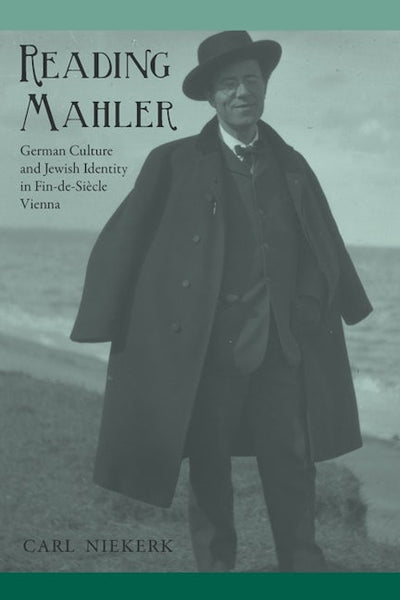
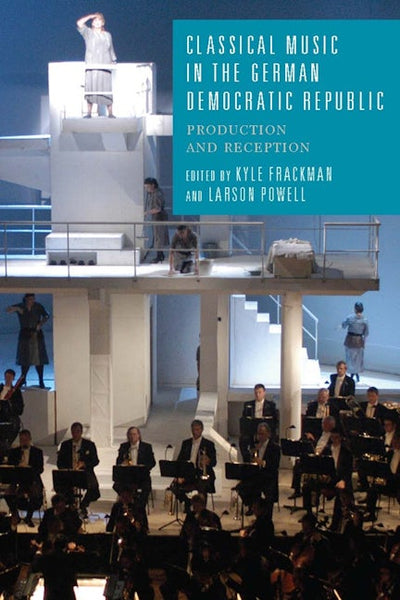
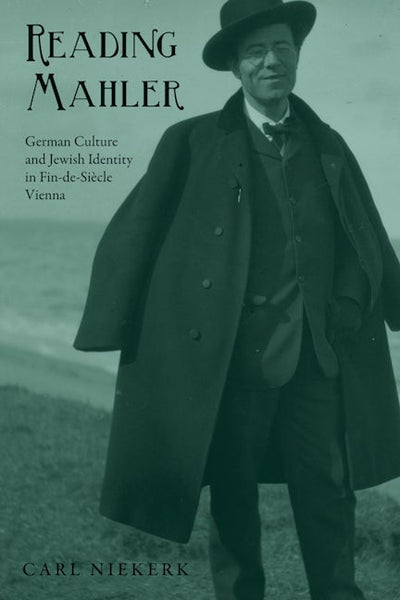
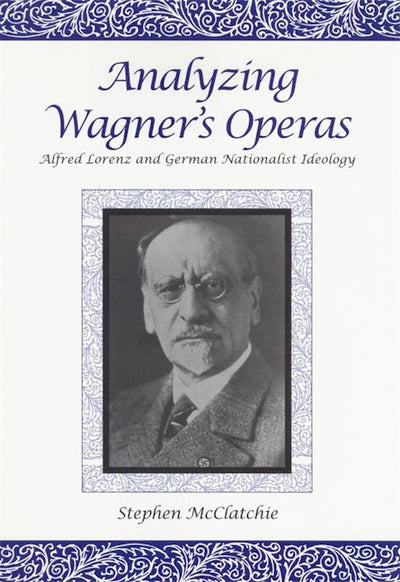













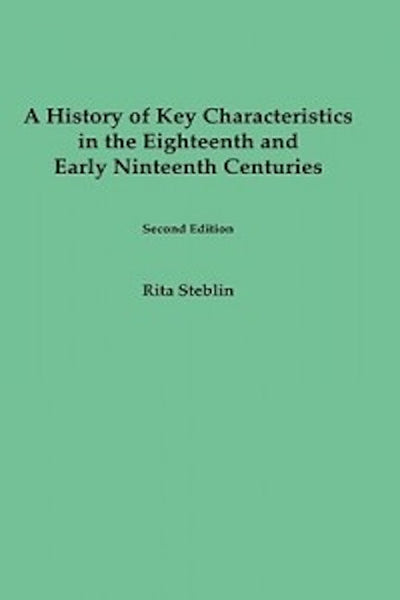

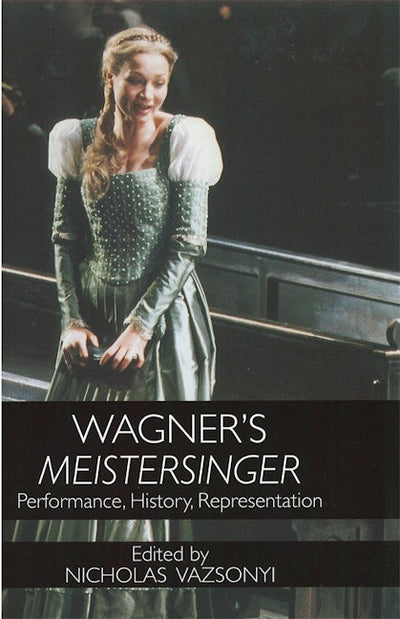
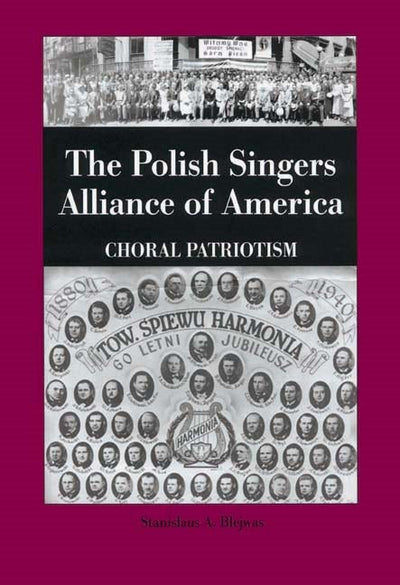
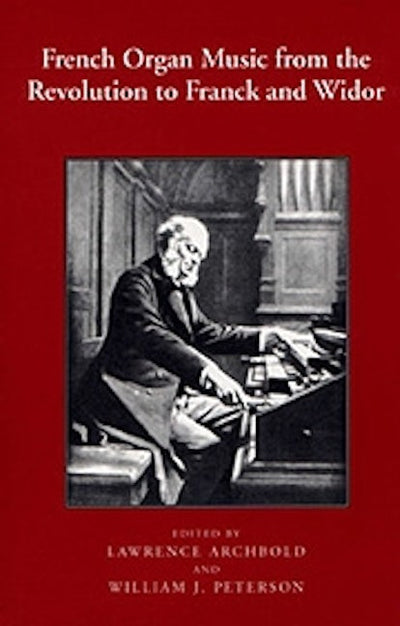
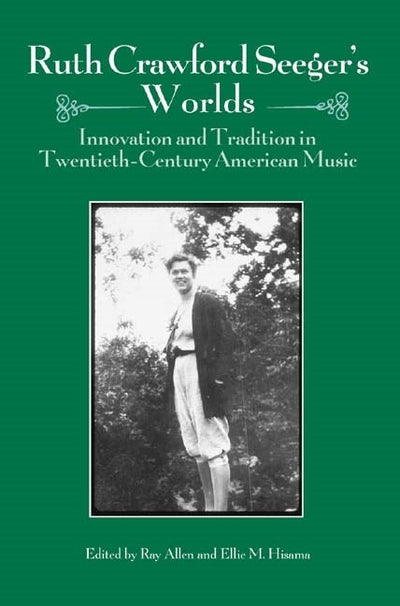
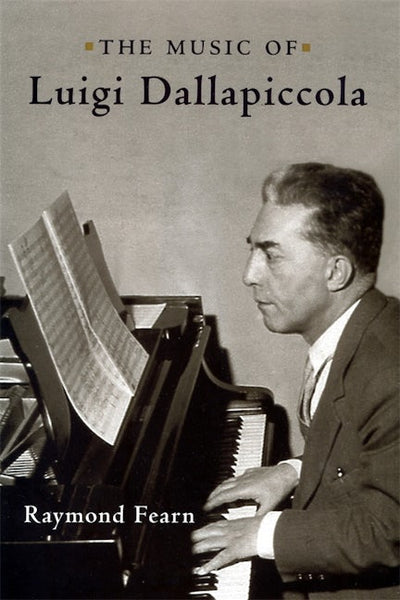
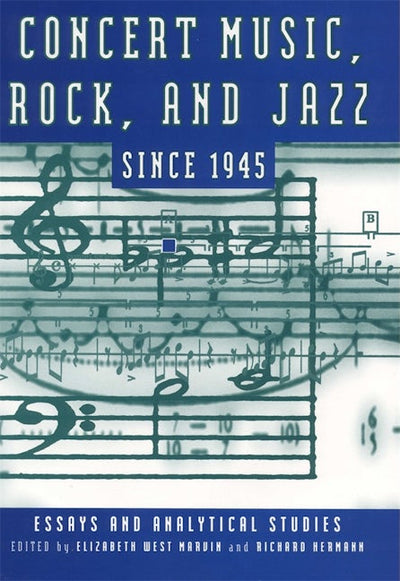
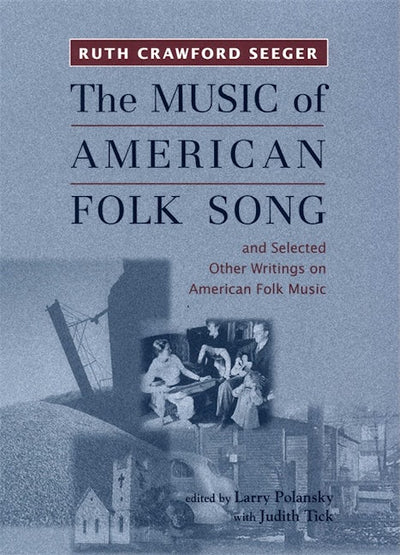
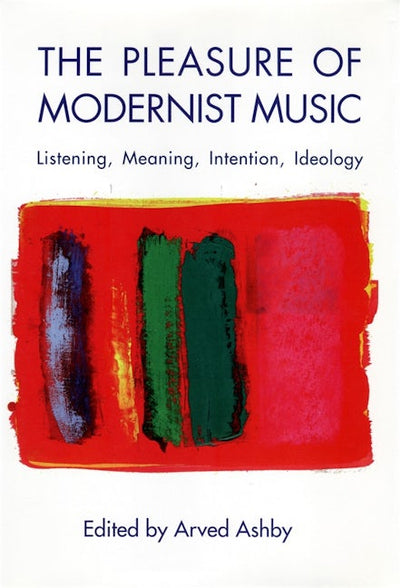
![An Annotated Catalog of the Edward C. Atwater Collection of American Popular Medicine and Health Reform [3 volume set]](http://indiepubs.com/cdn/shop/files/9781580463041_400x.jpg?v=1719572658)
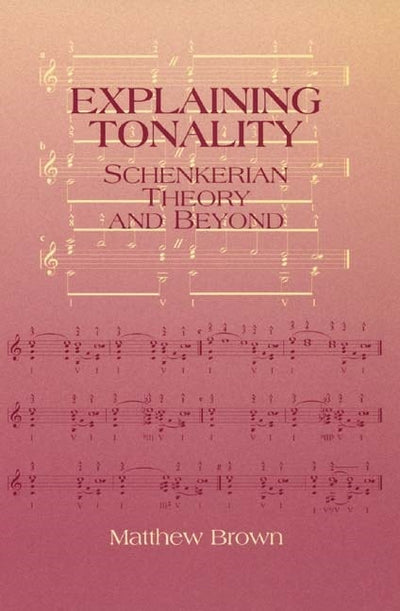
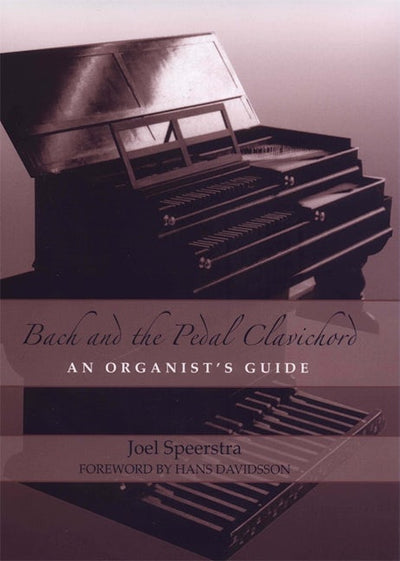
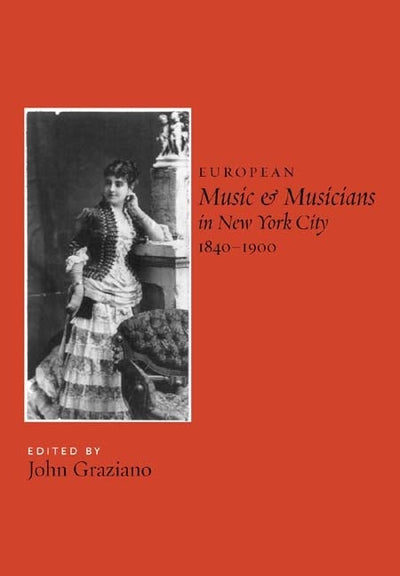
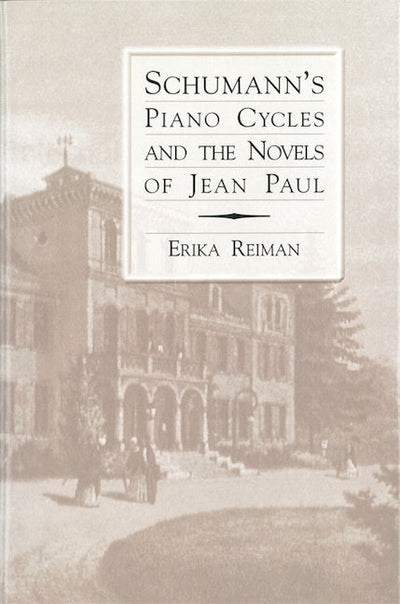
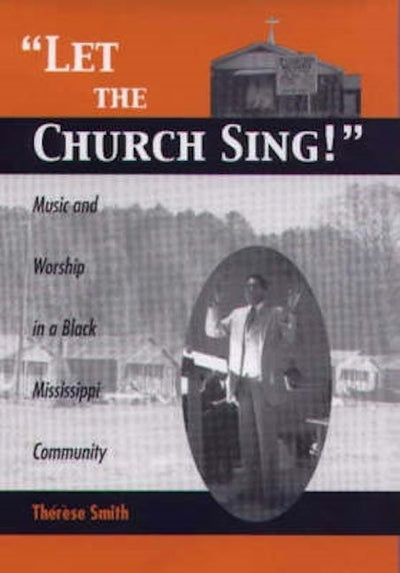
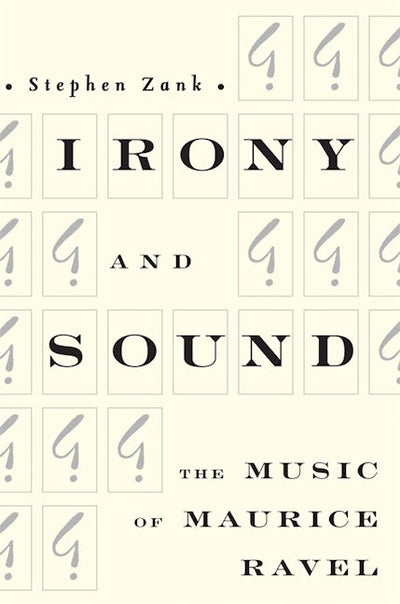
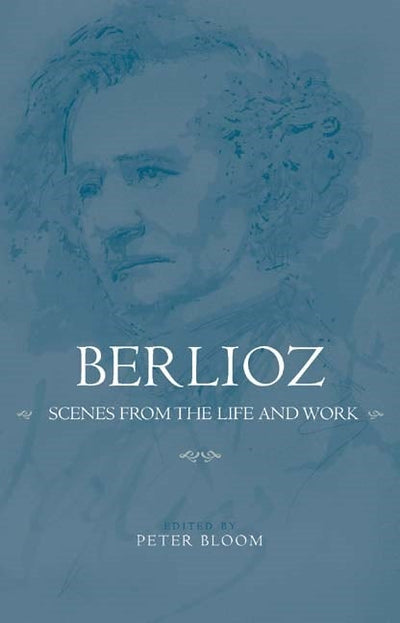
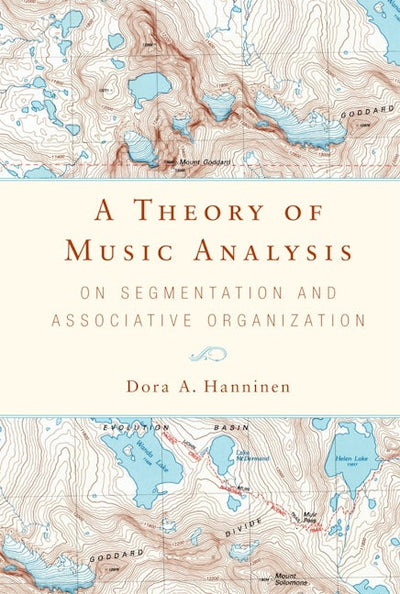
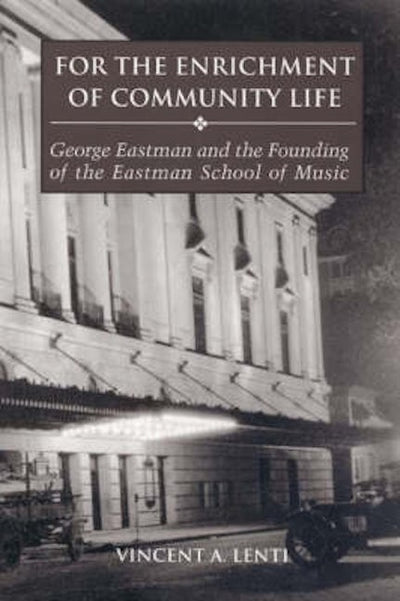
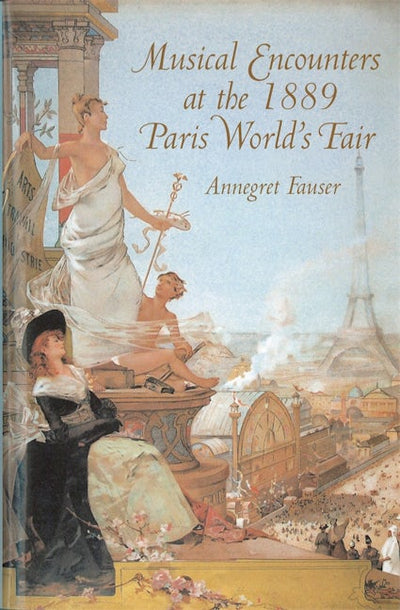
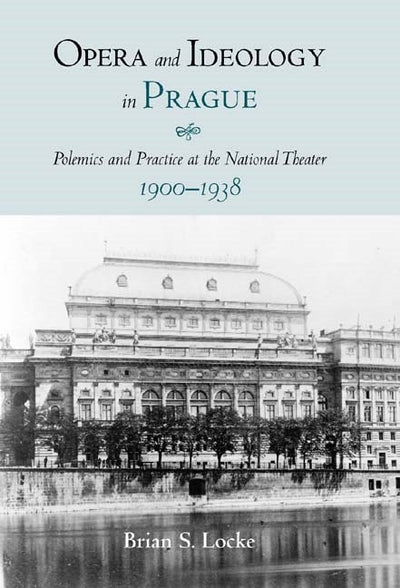
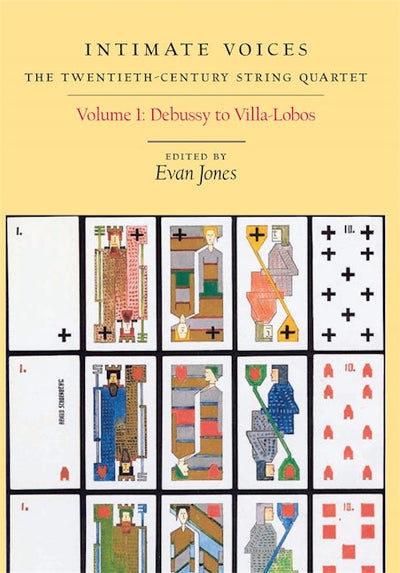
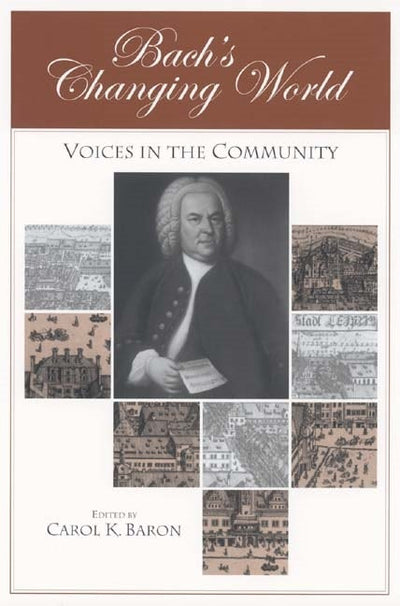
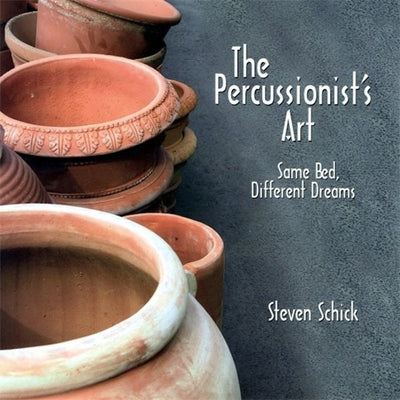
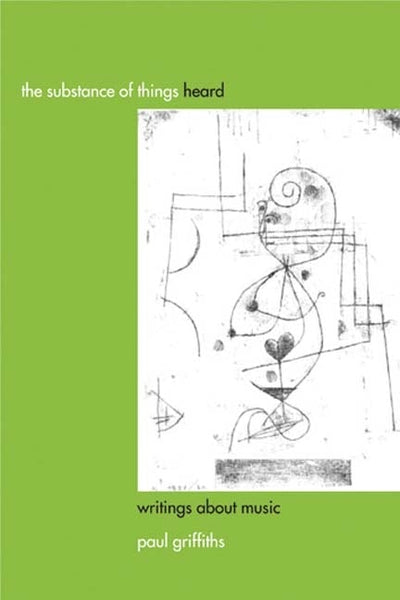
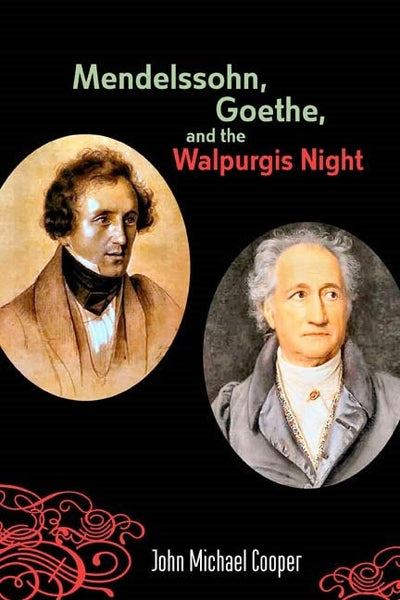
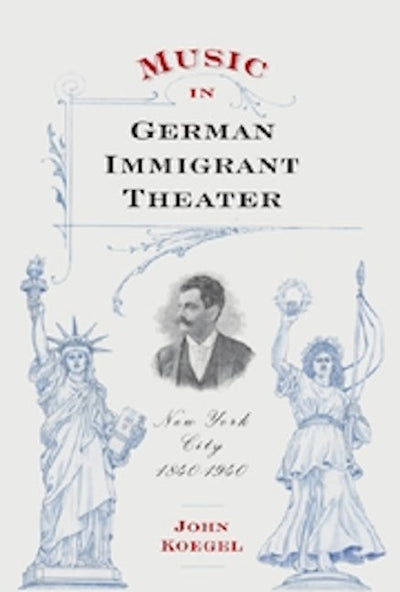




























![Intimate Voices: The Twentieth-Century String Quartet [2 volume set]](http://indiepubs.com/cdn/shop/files/9781580463409_400x.jpg?v=1723033657)










